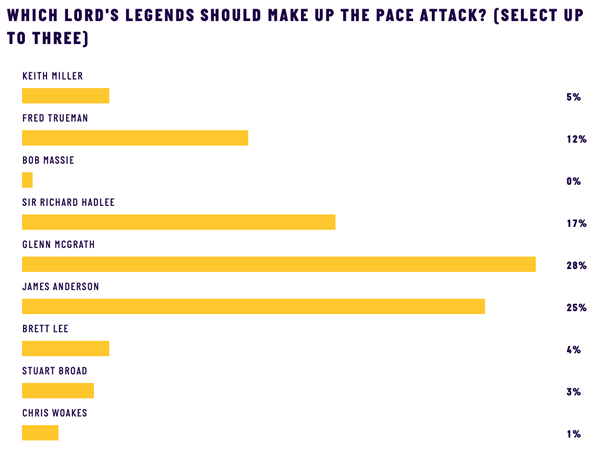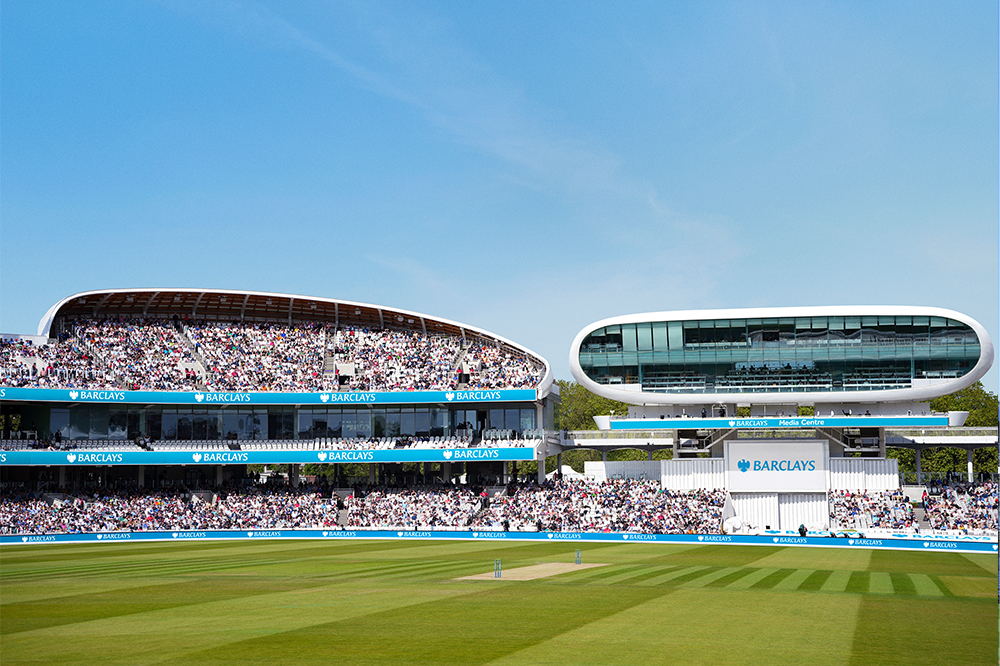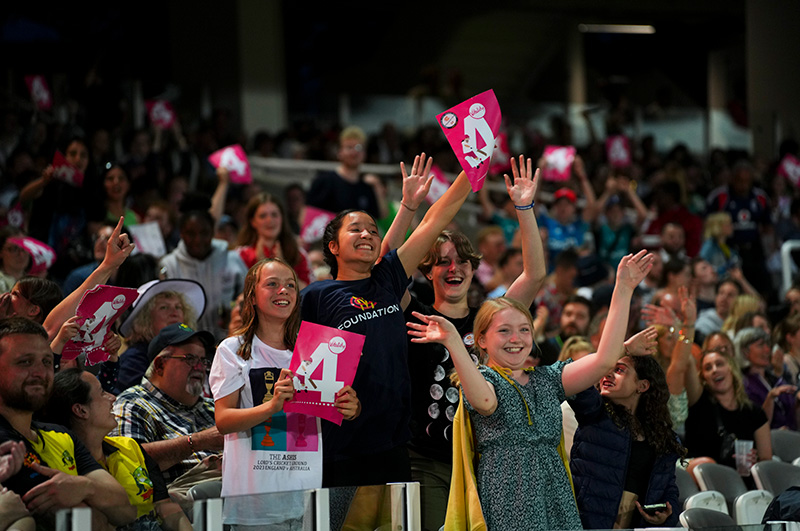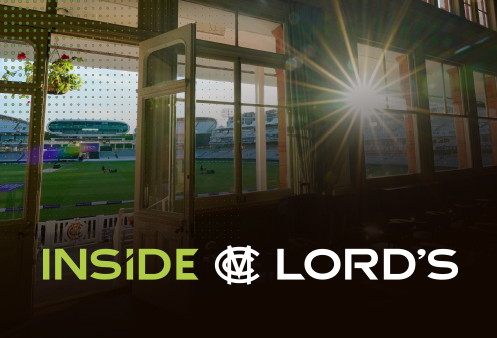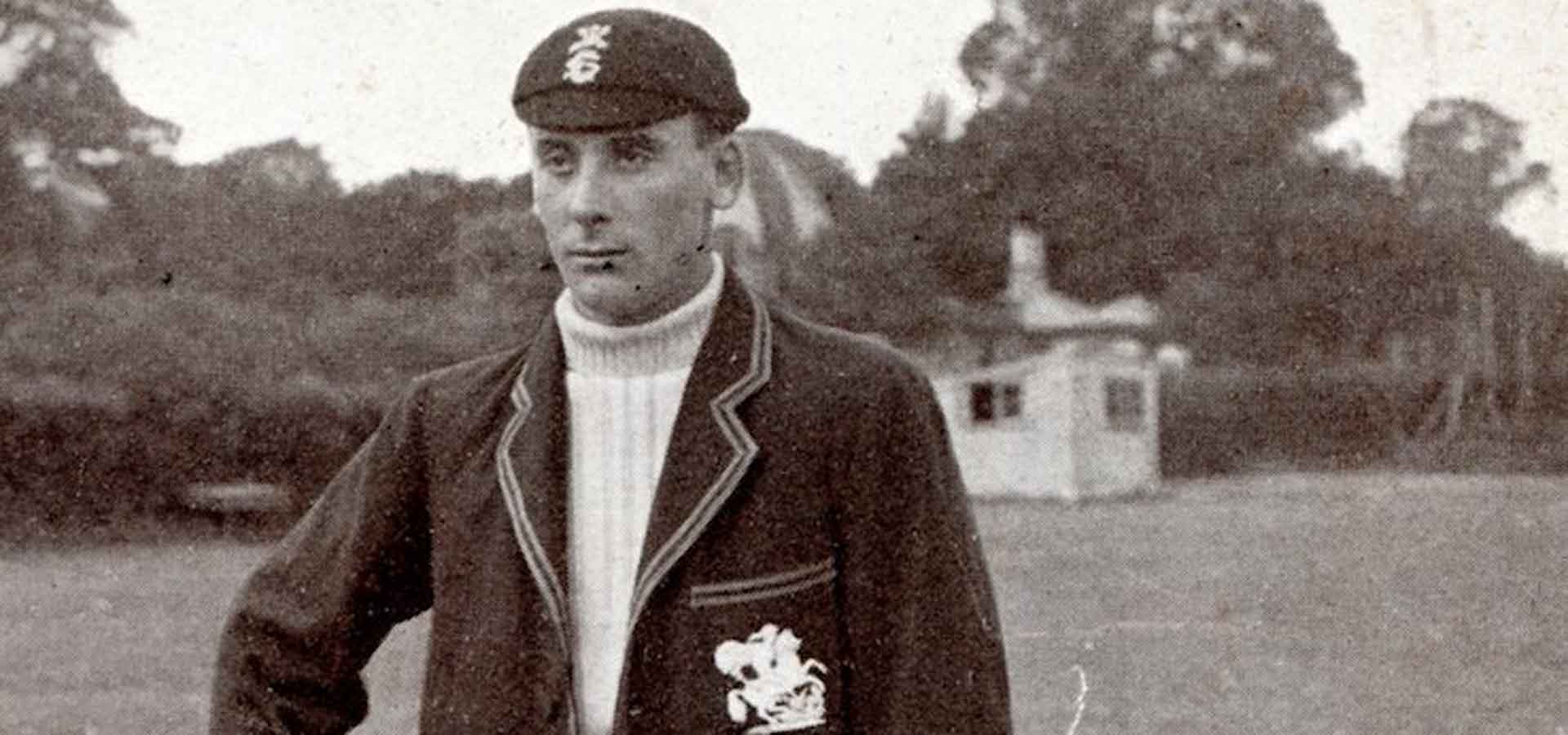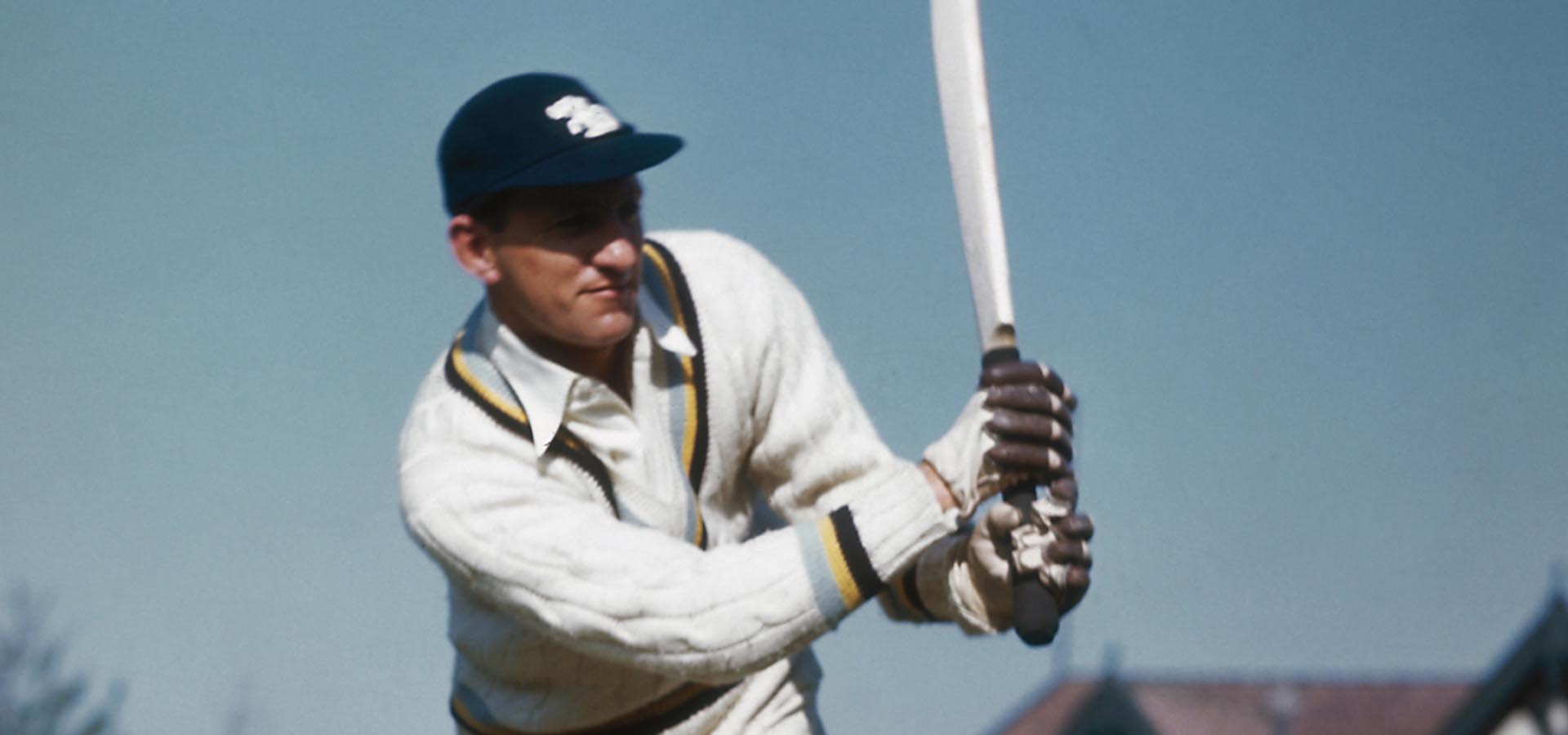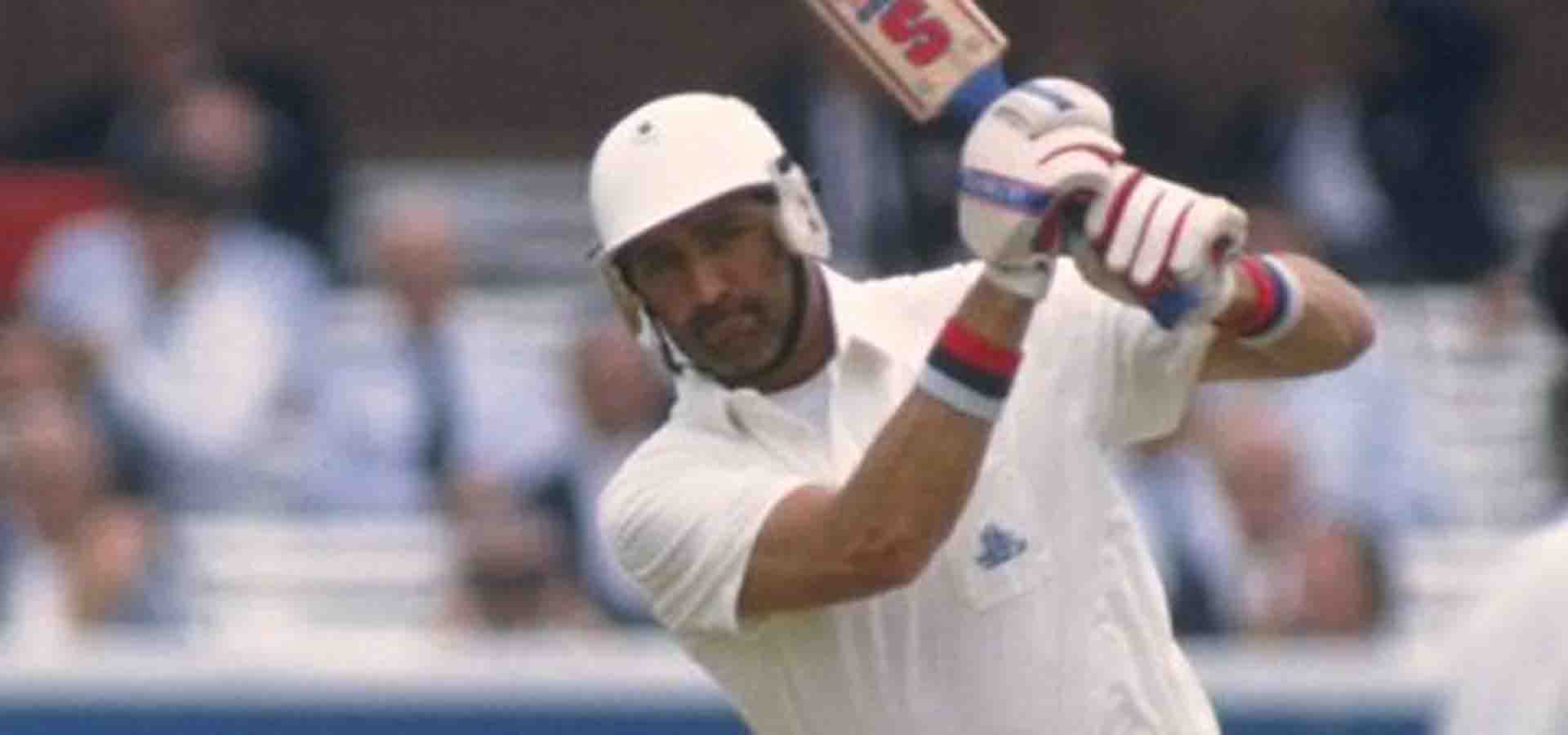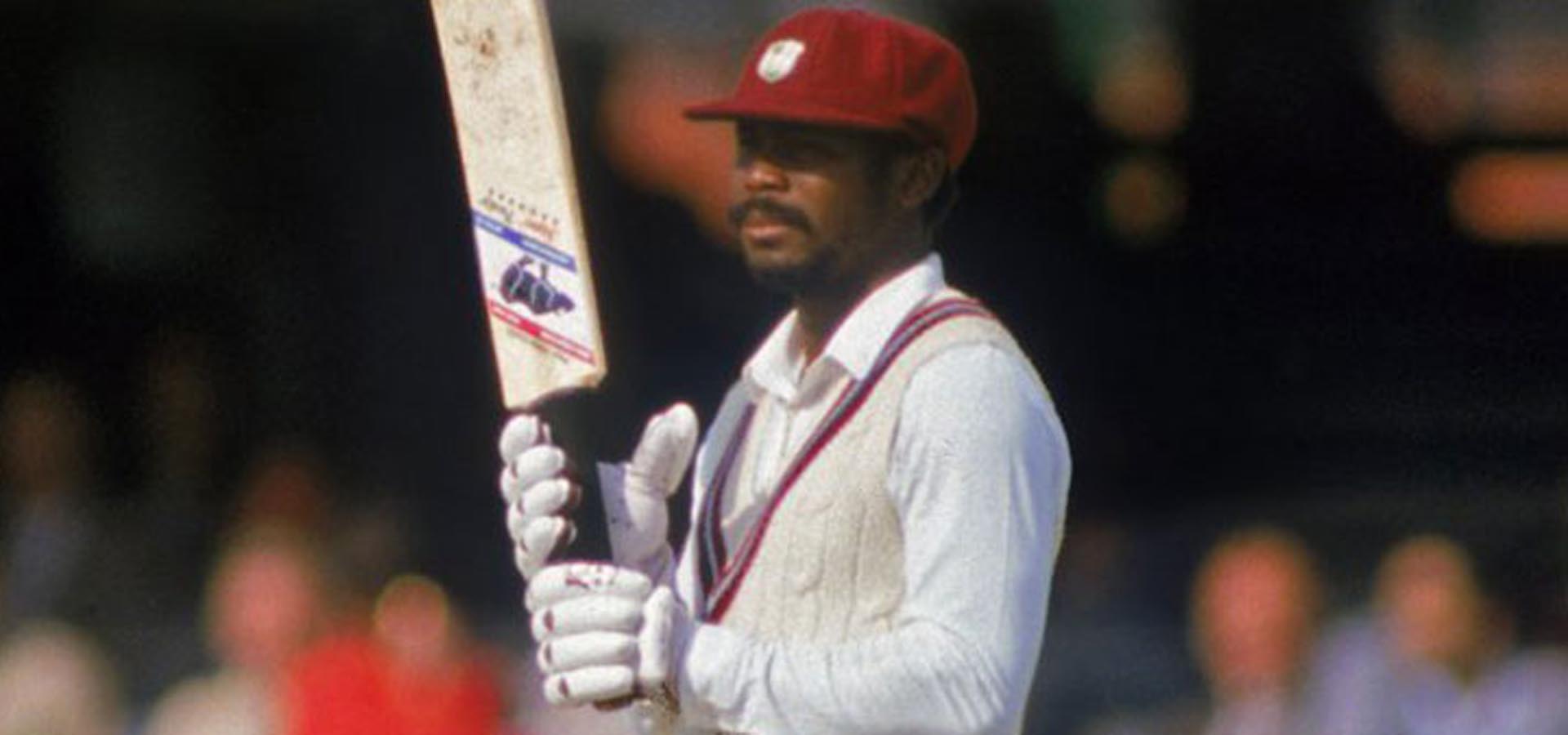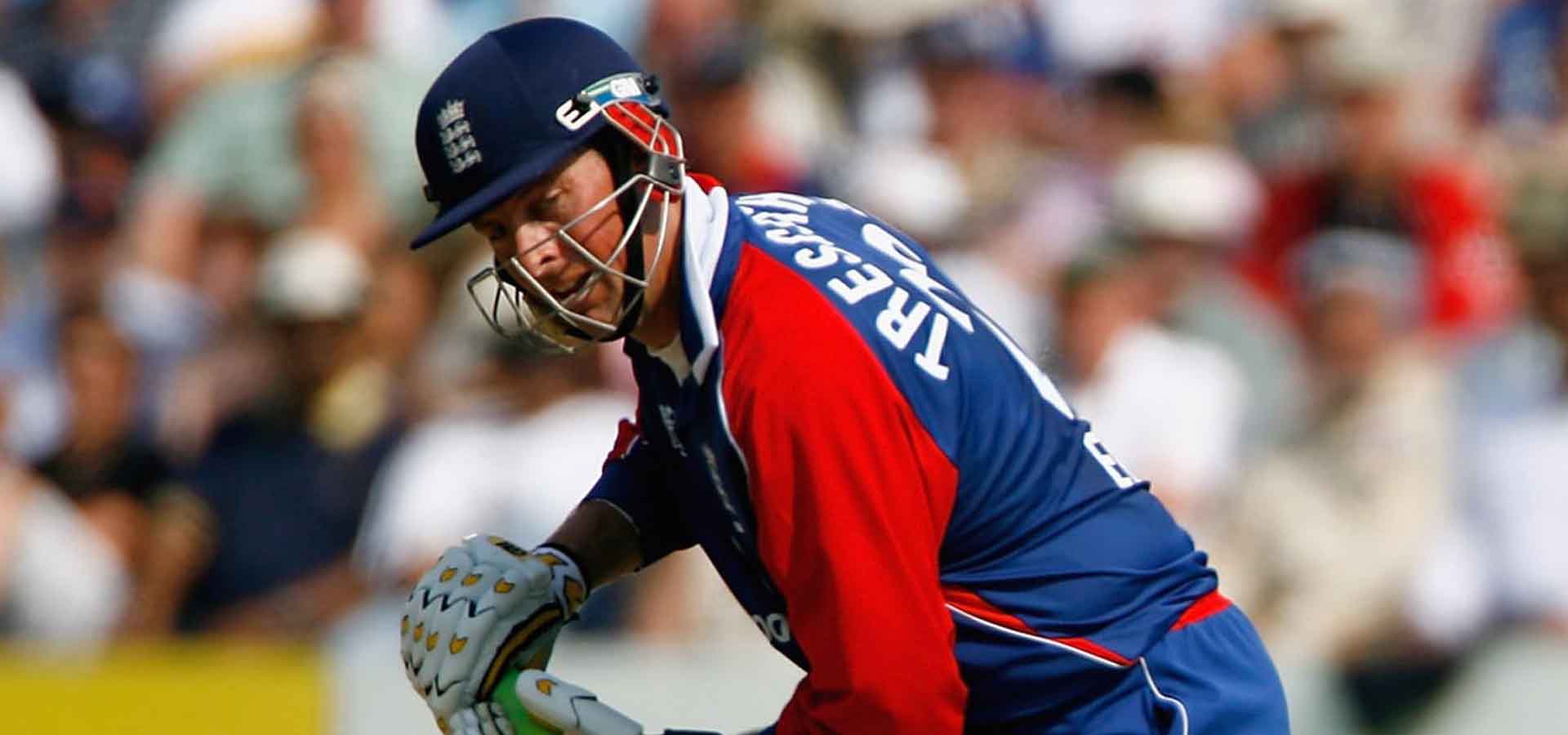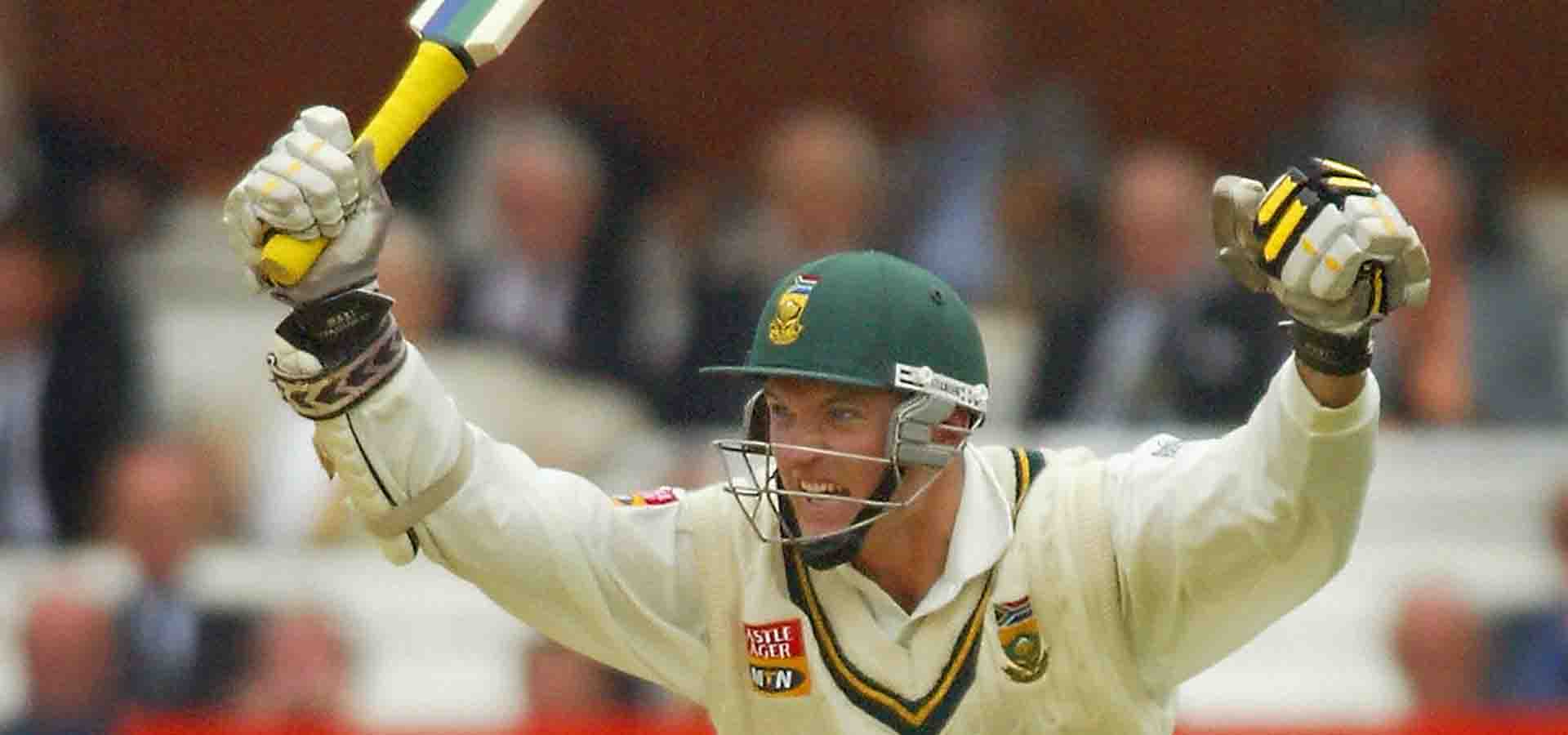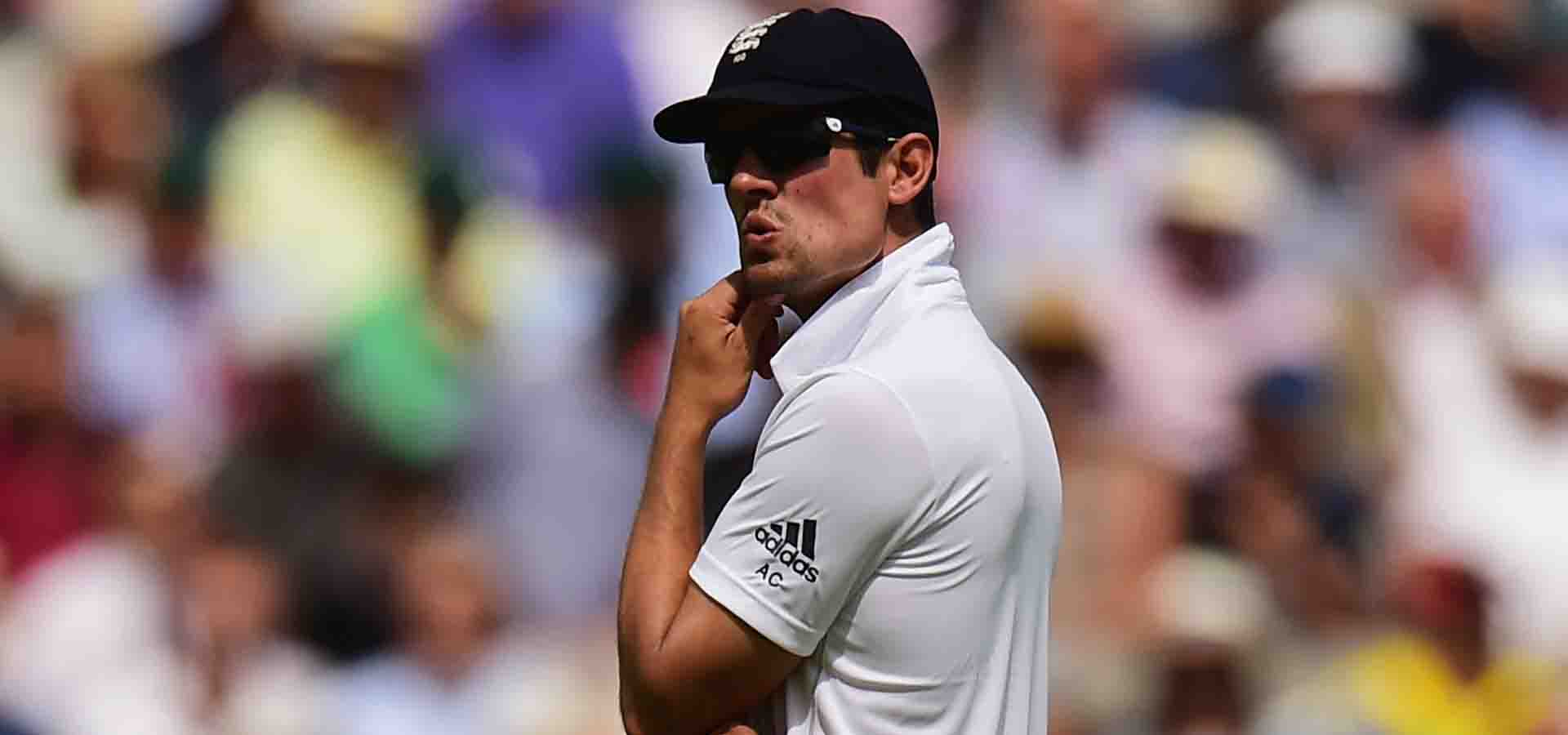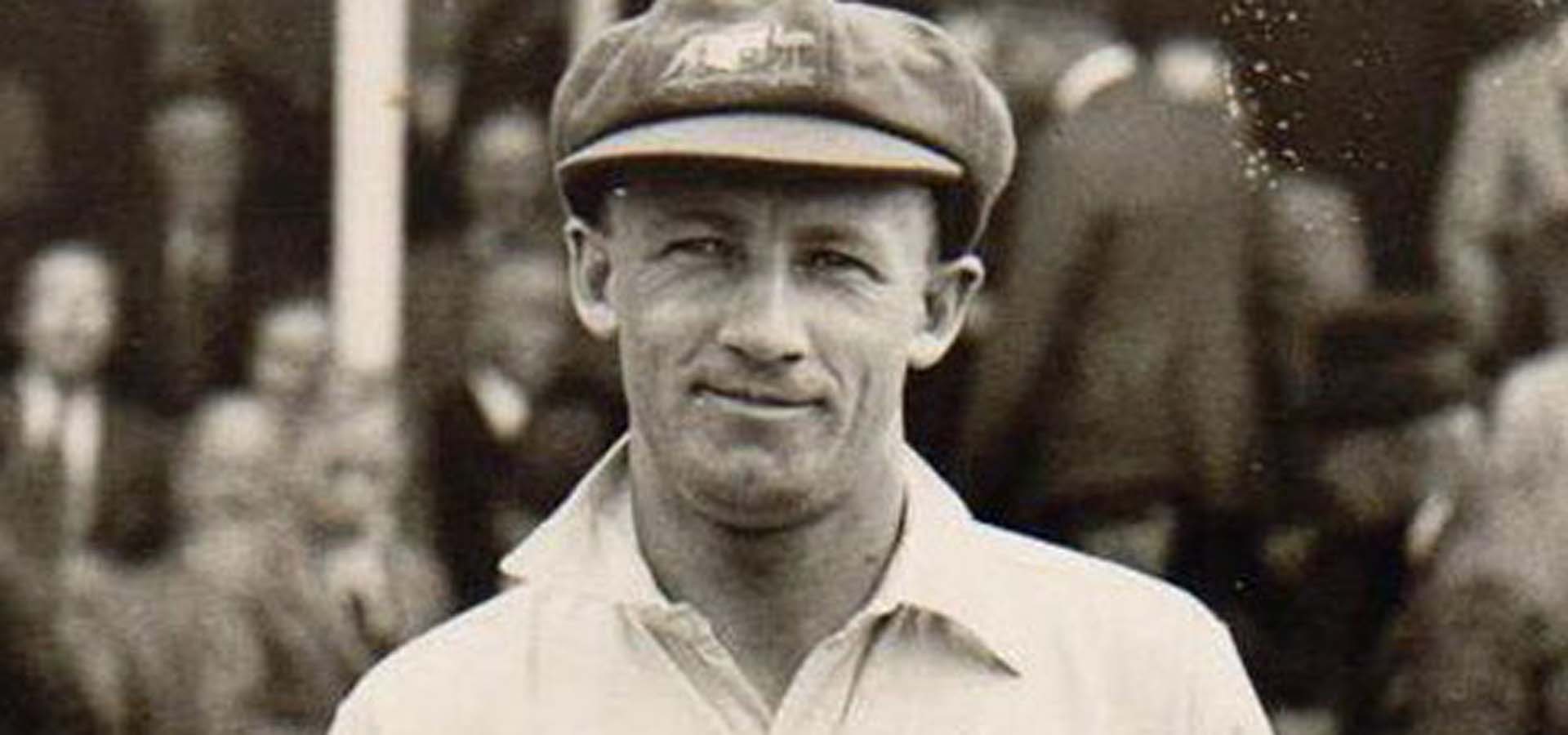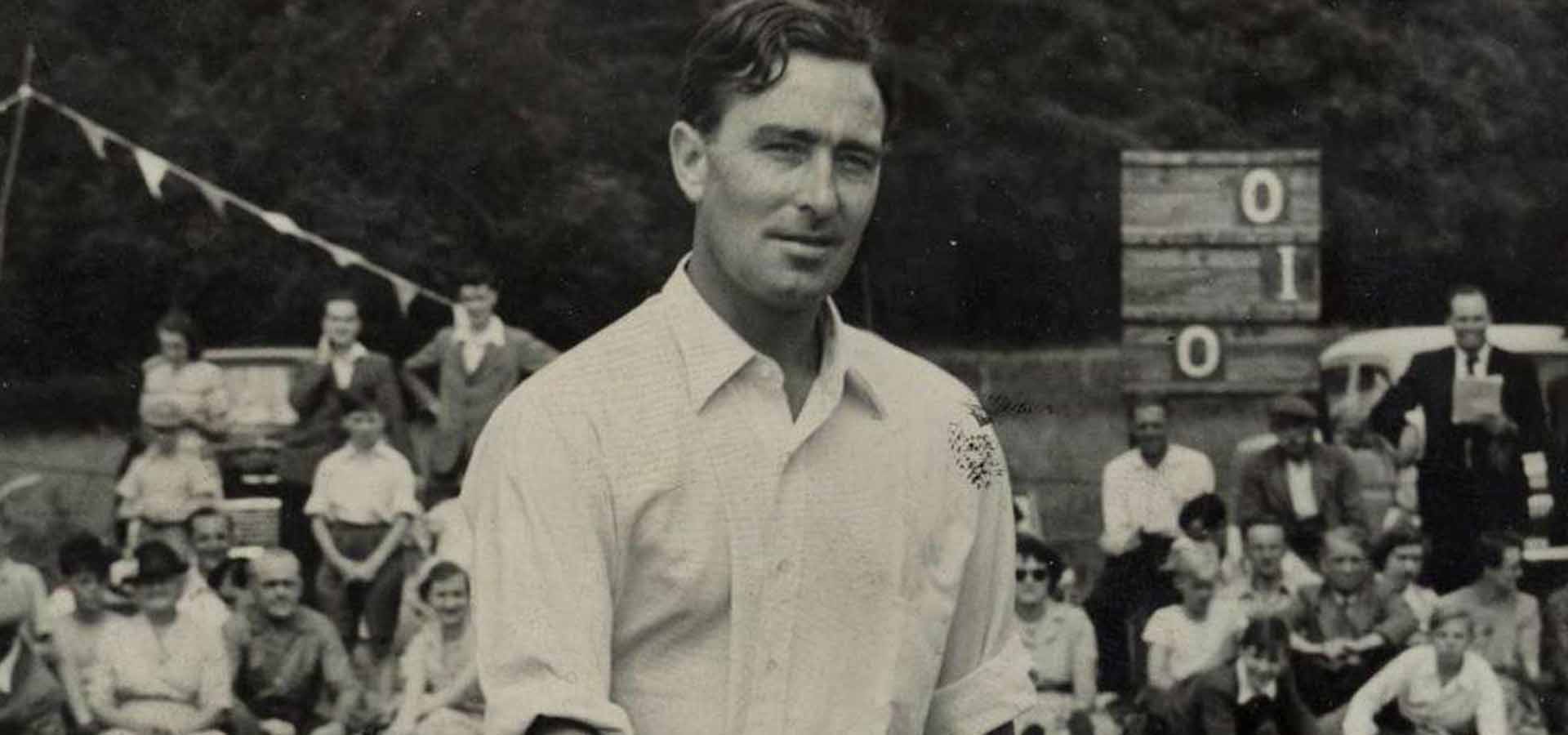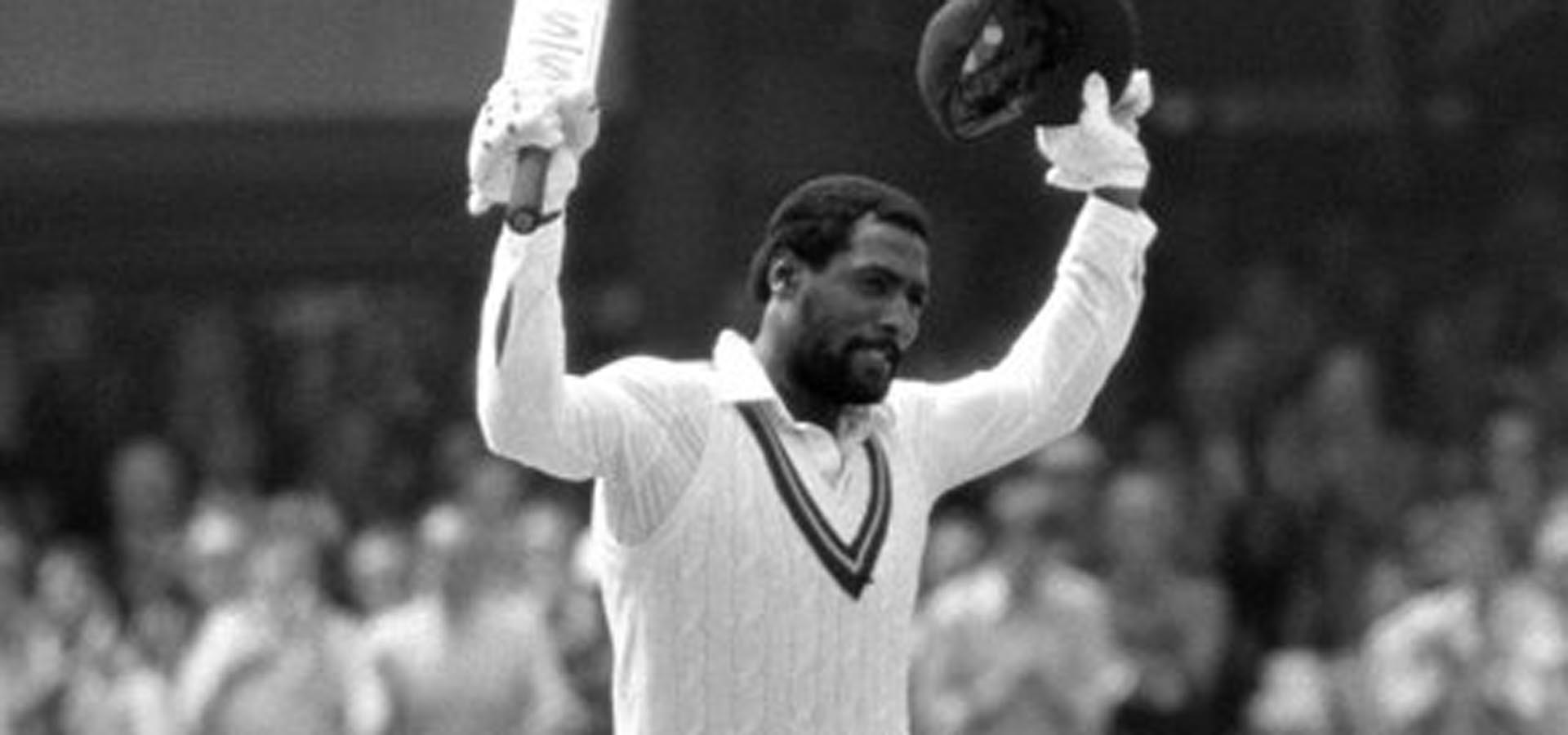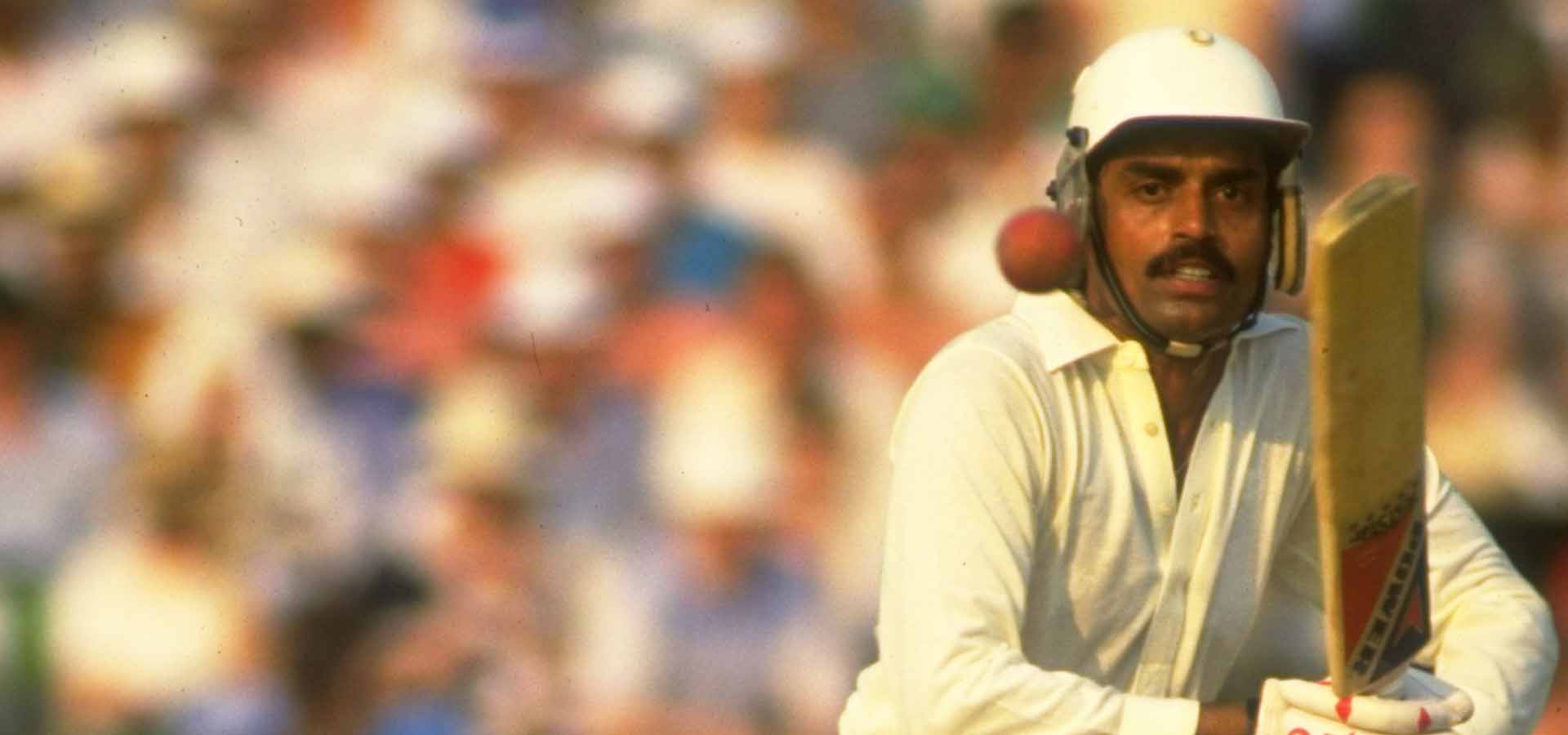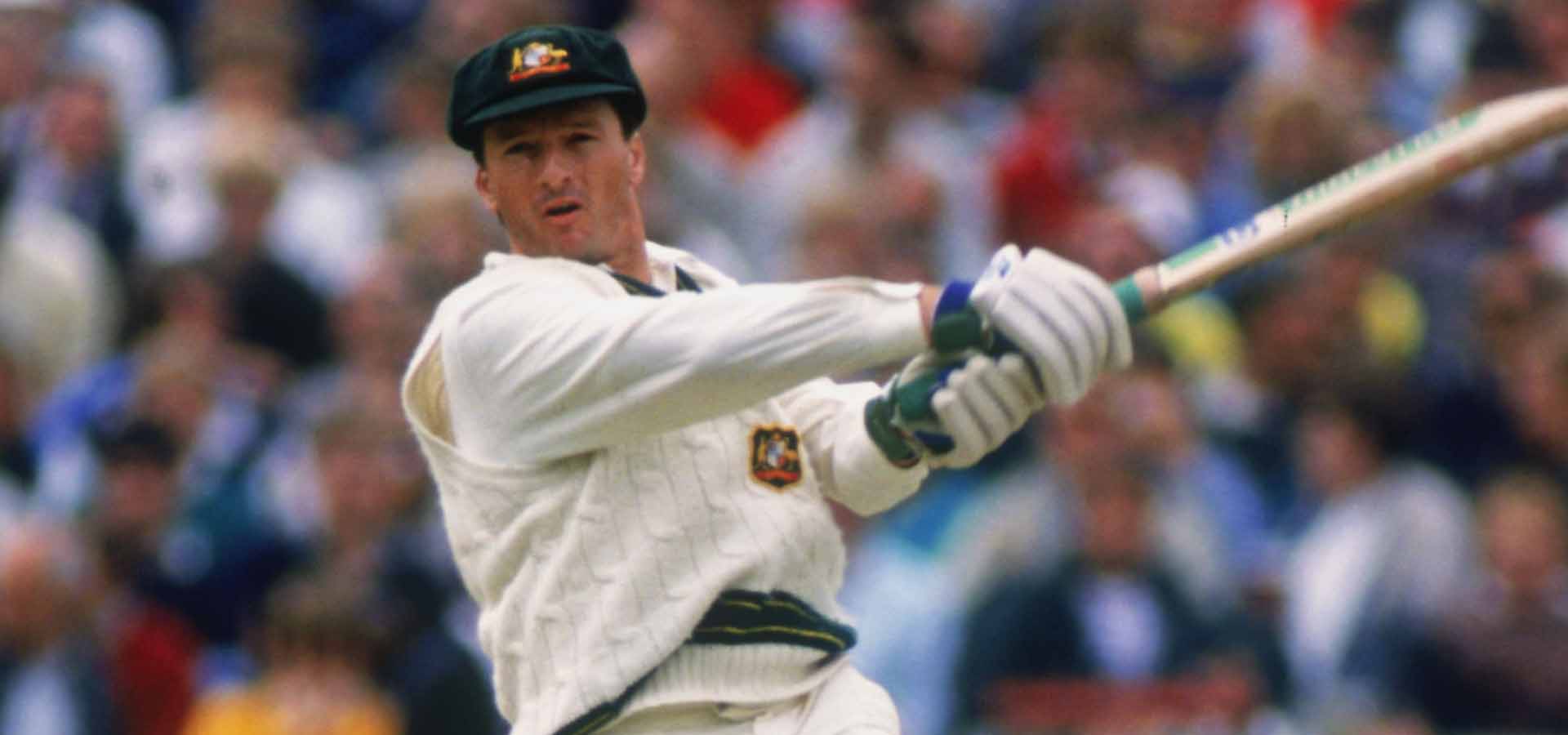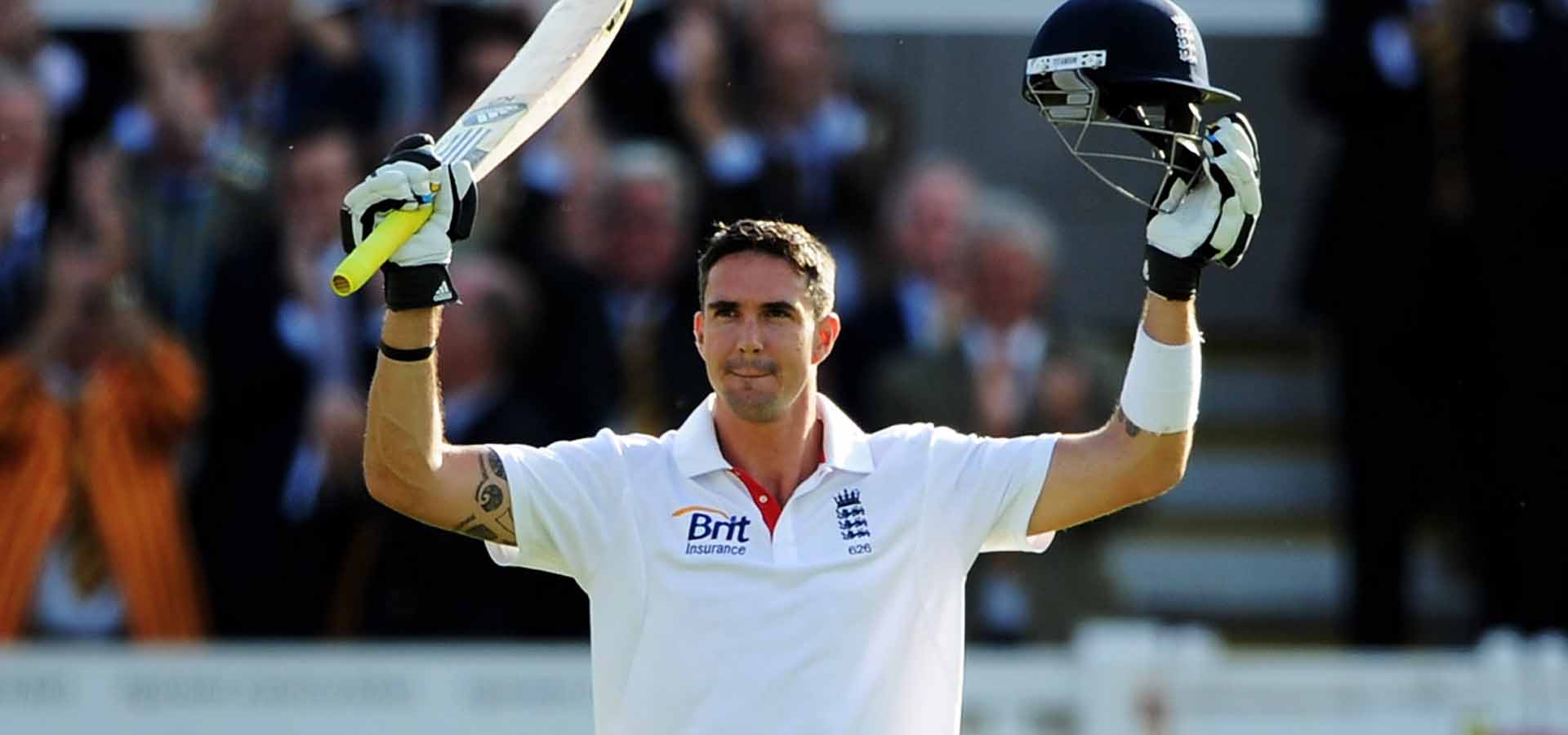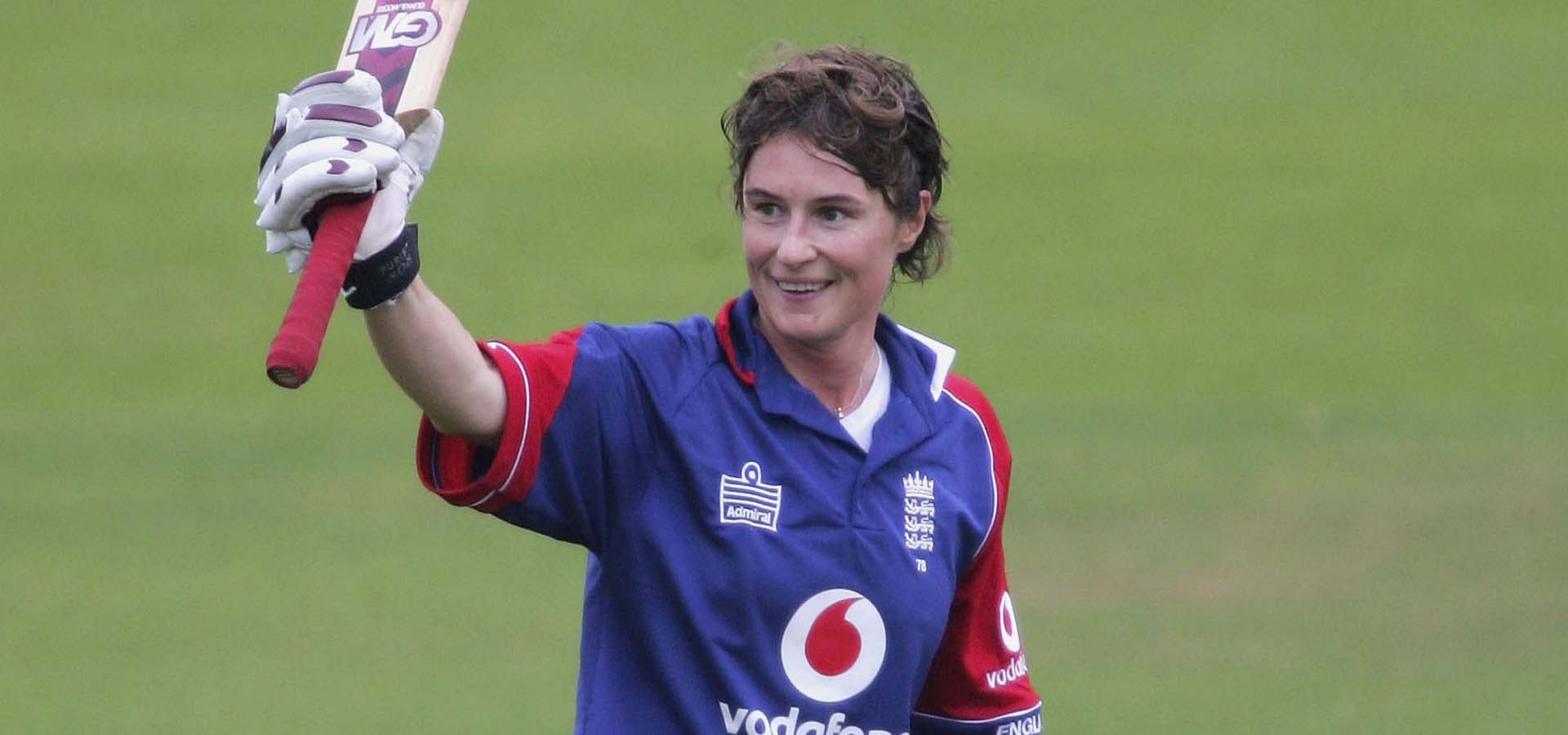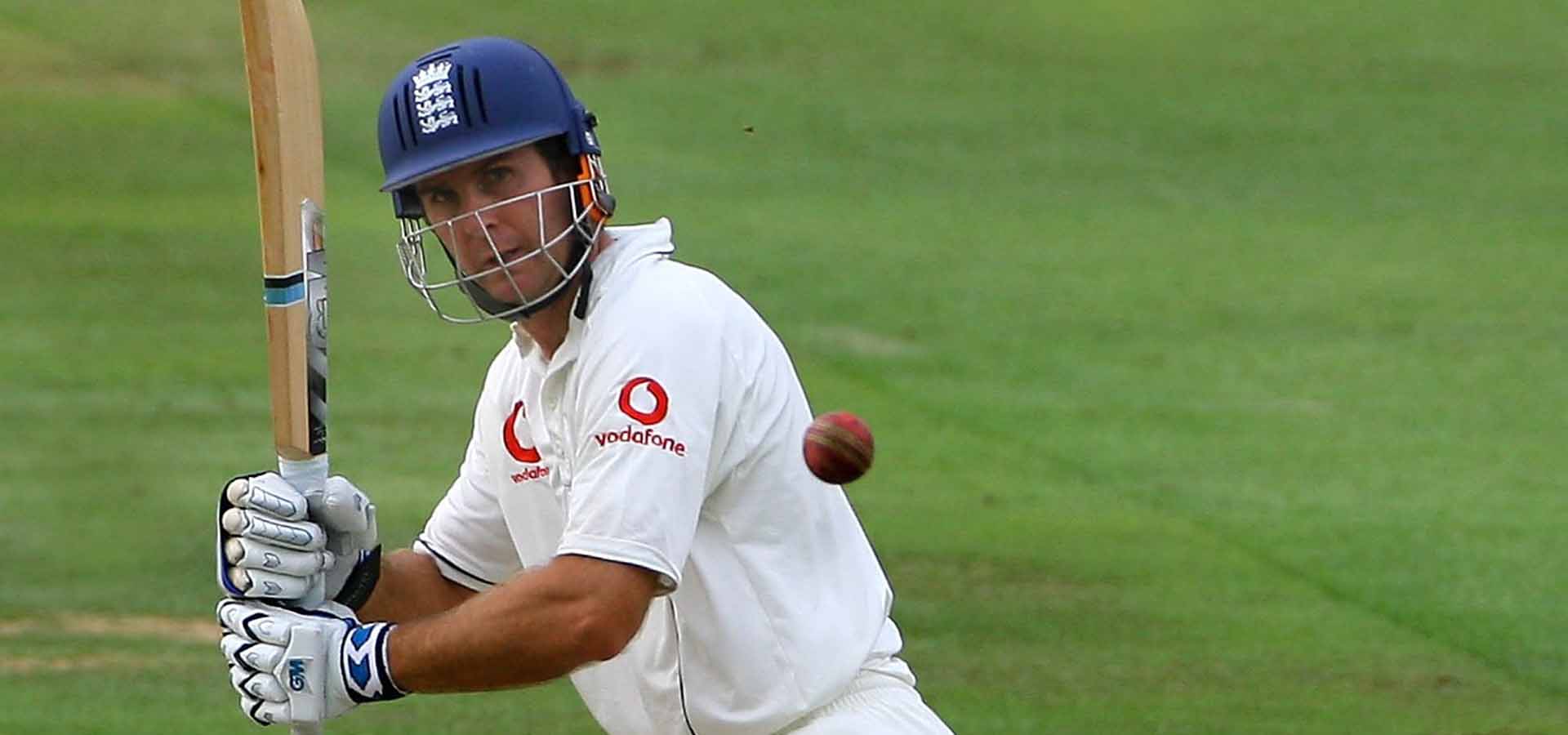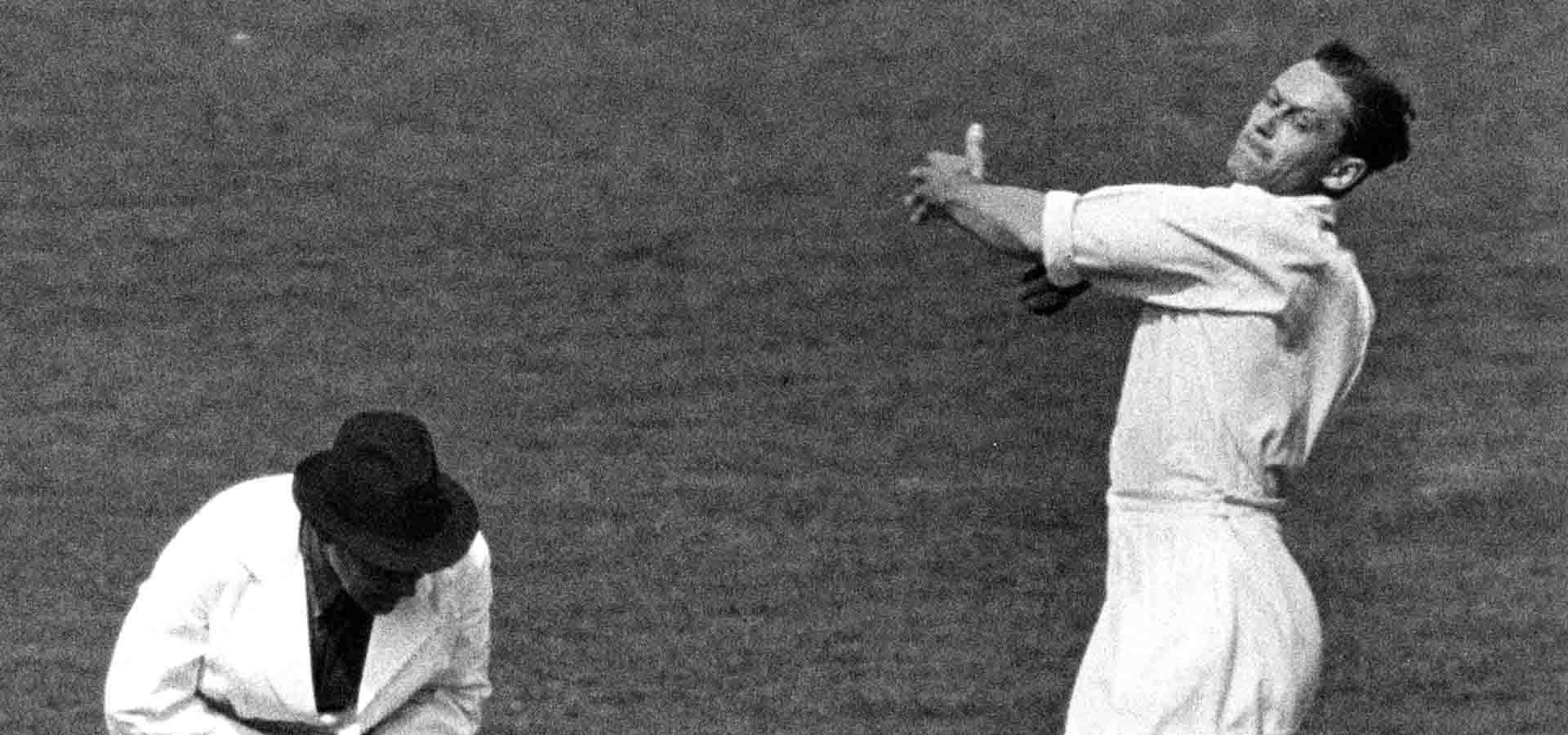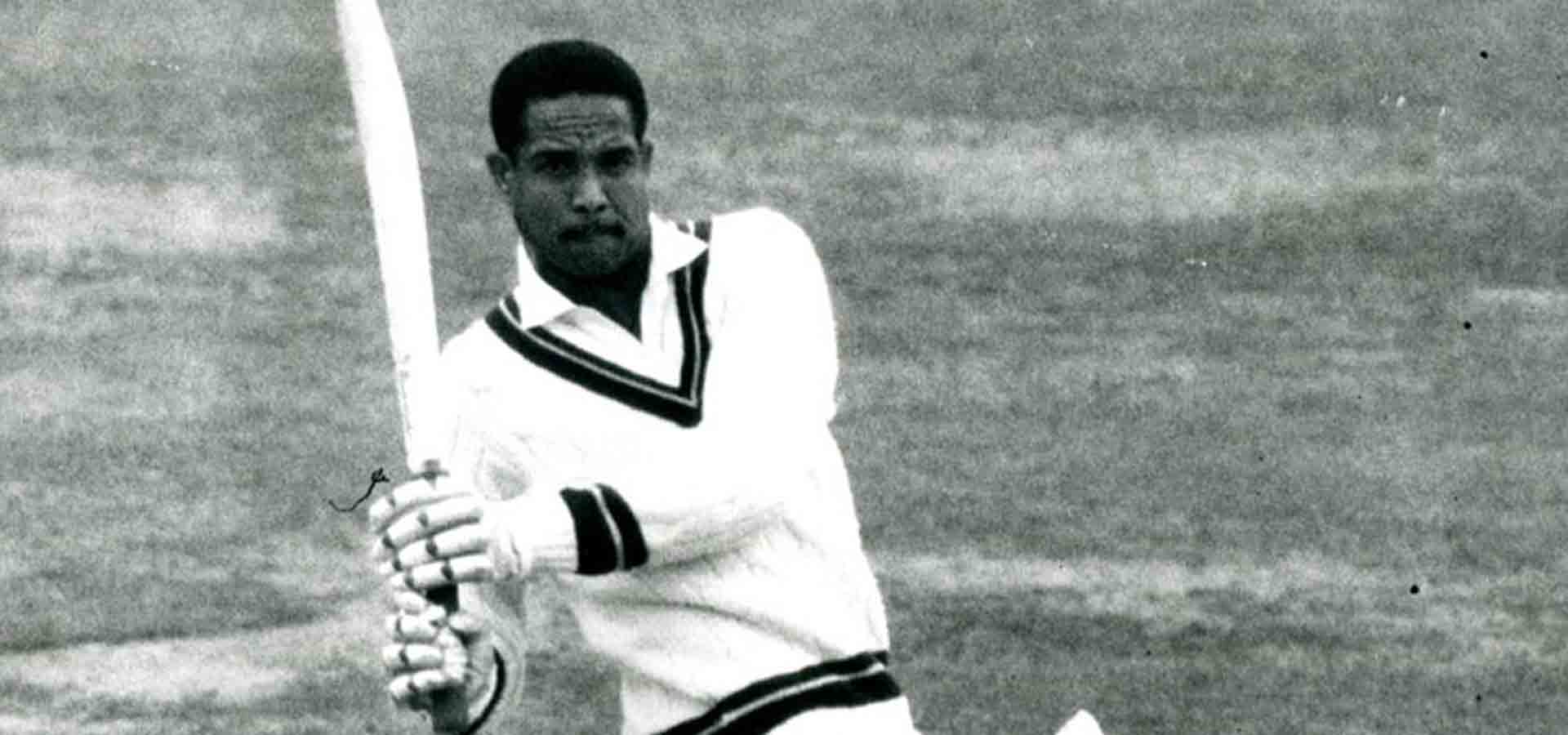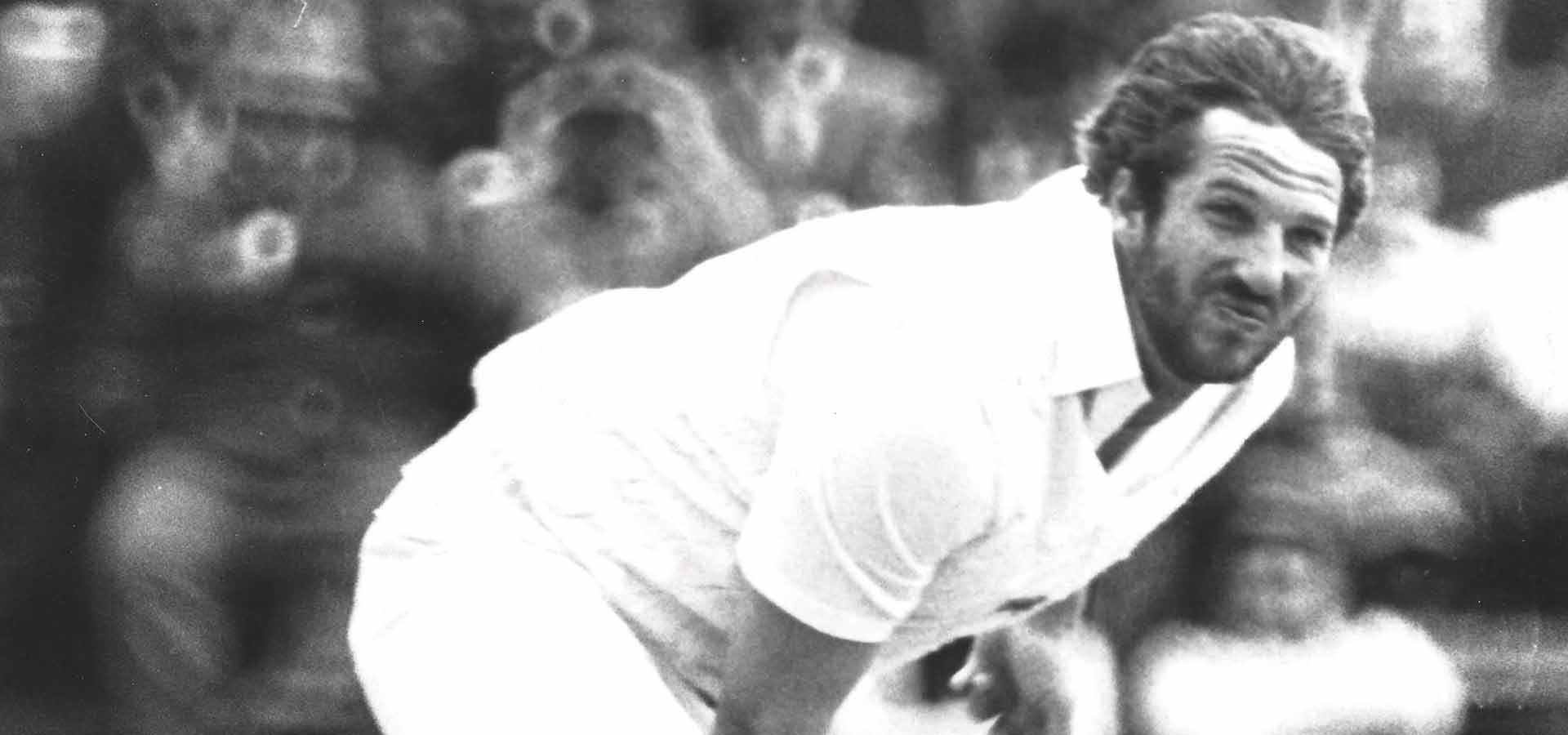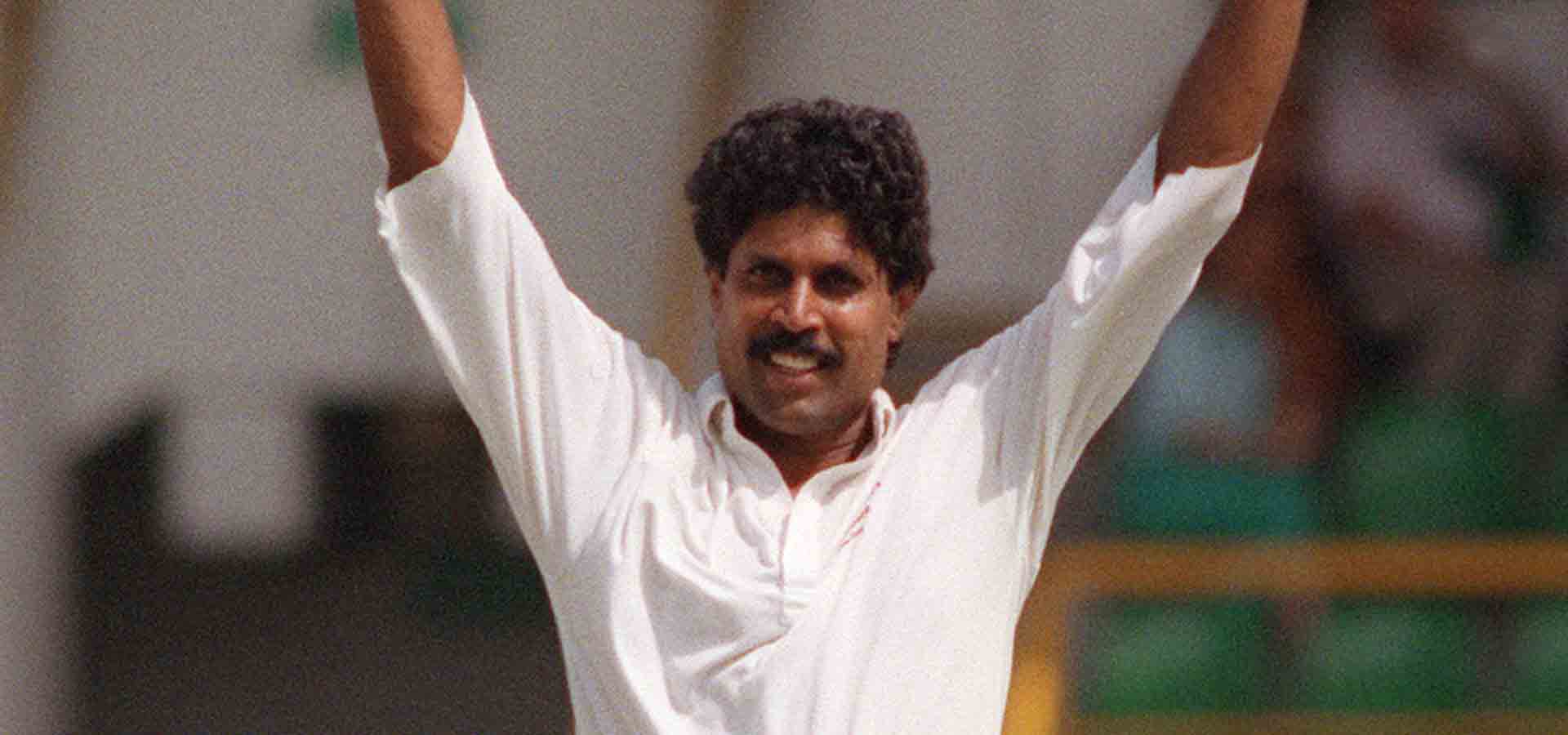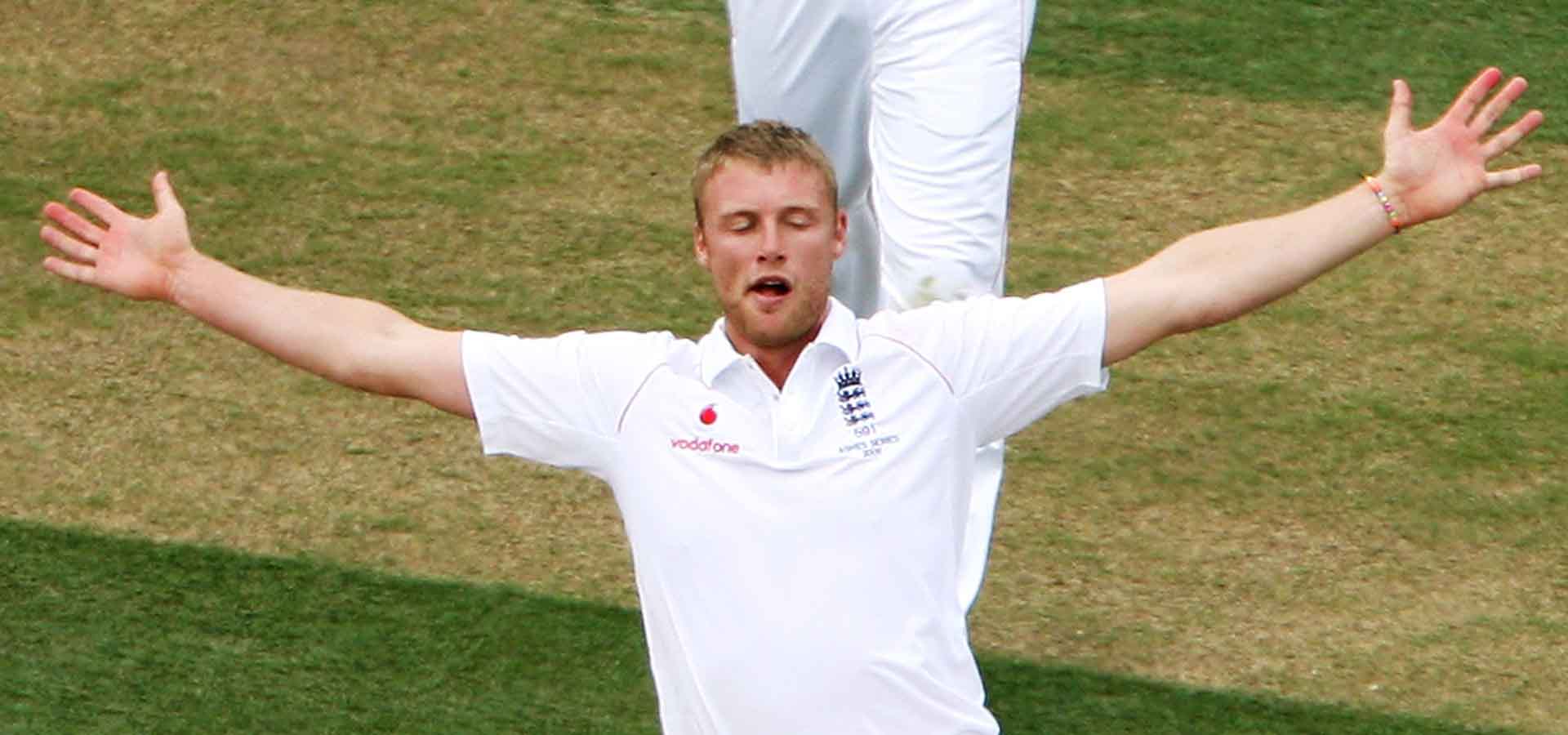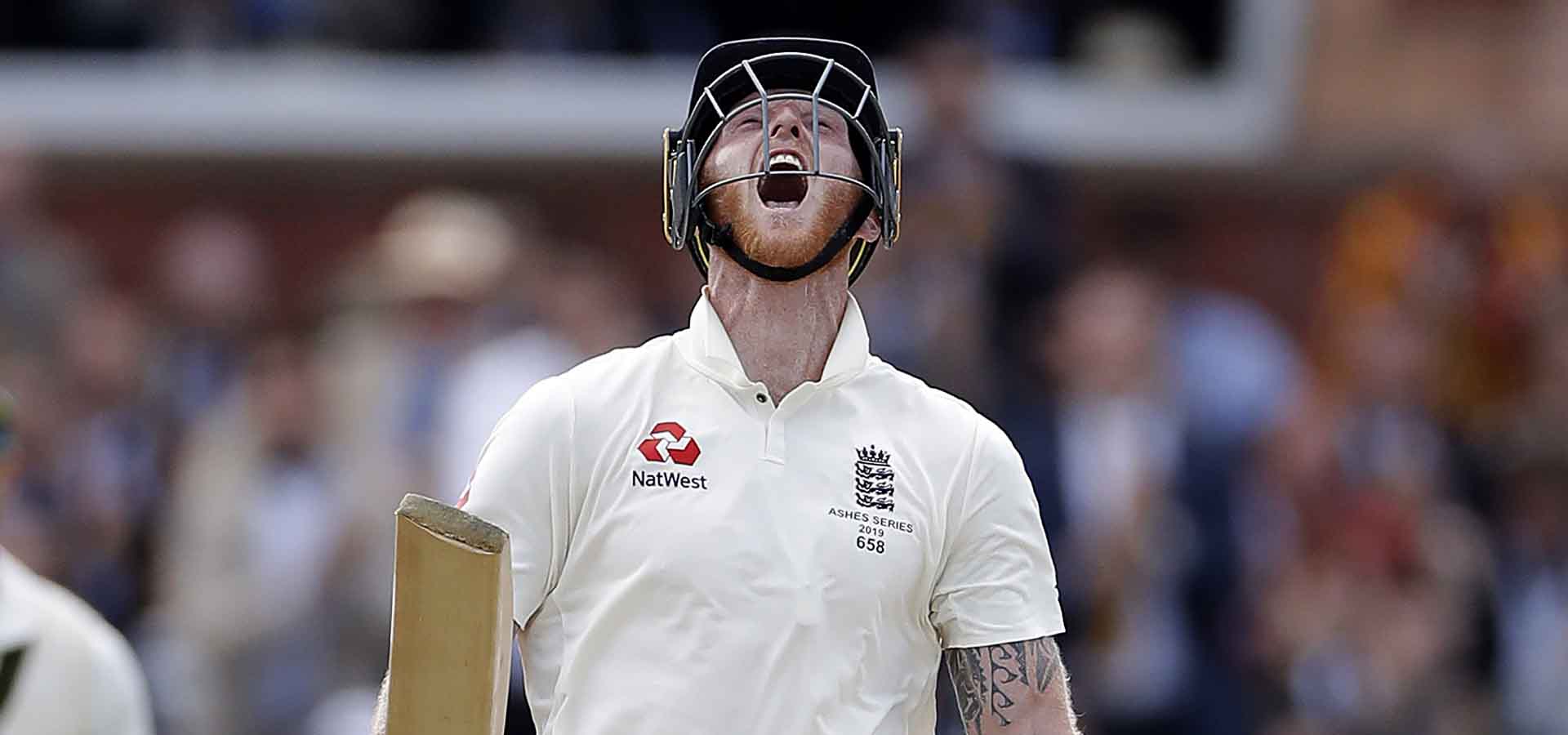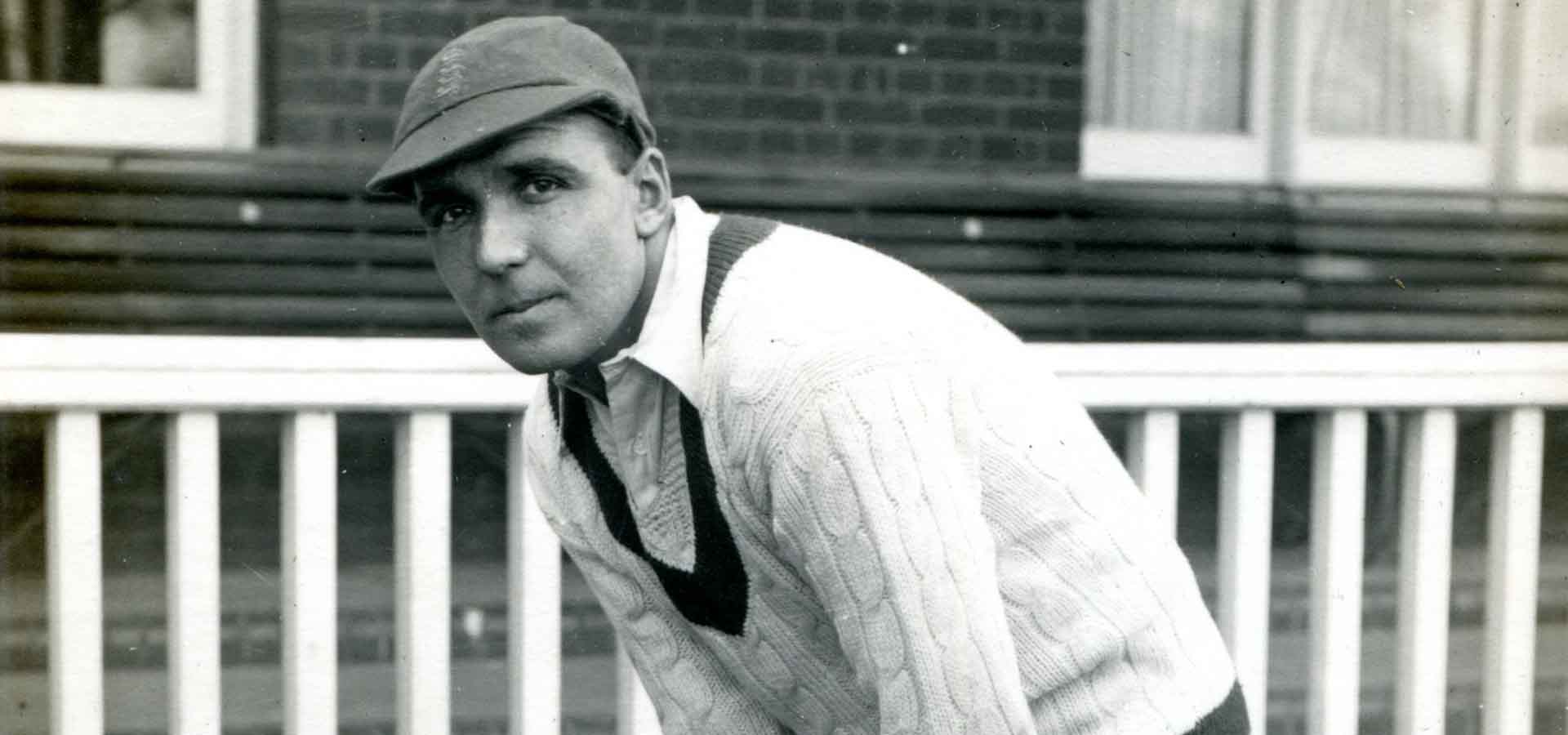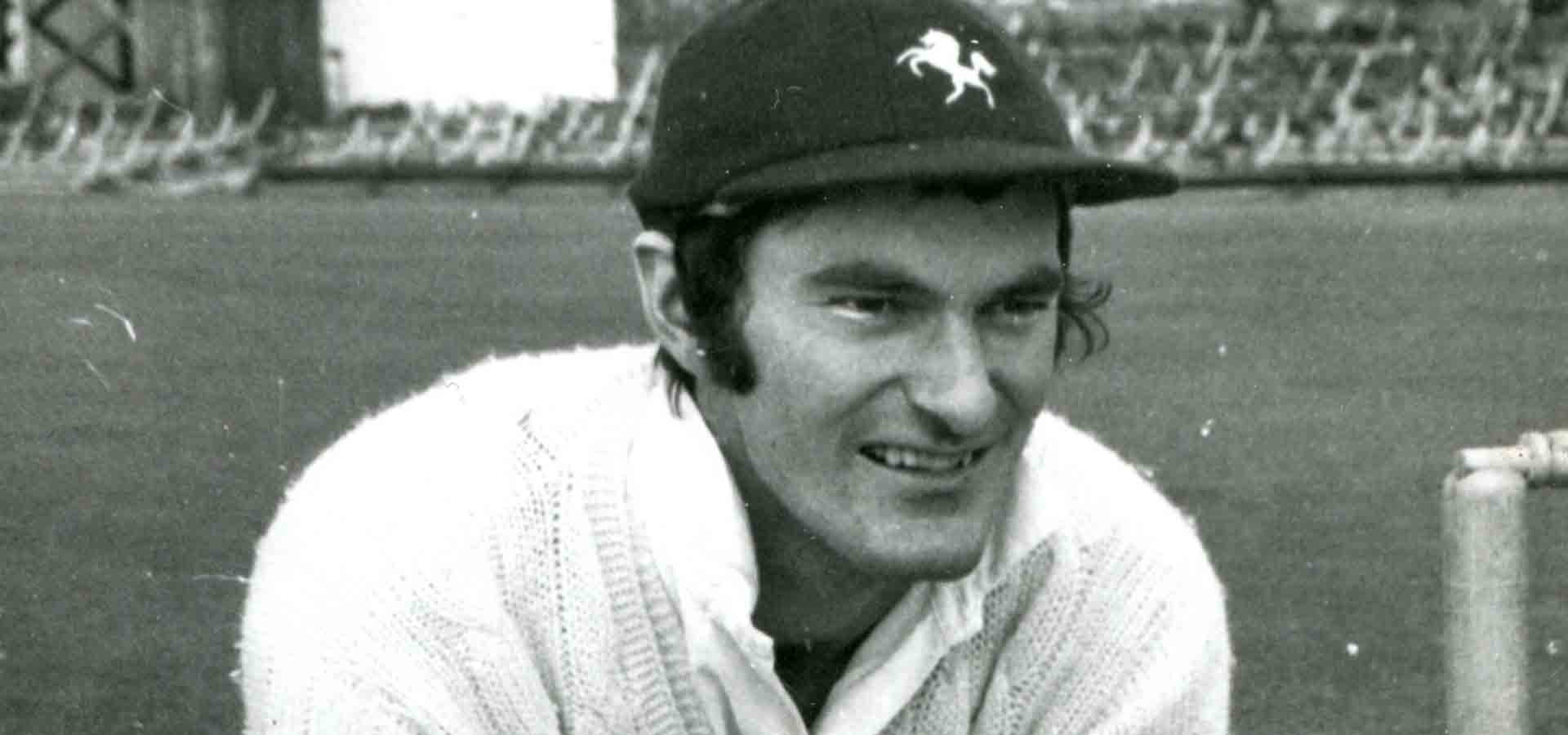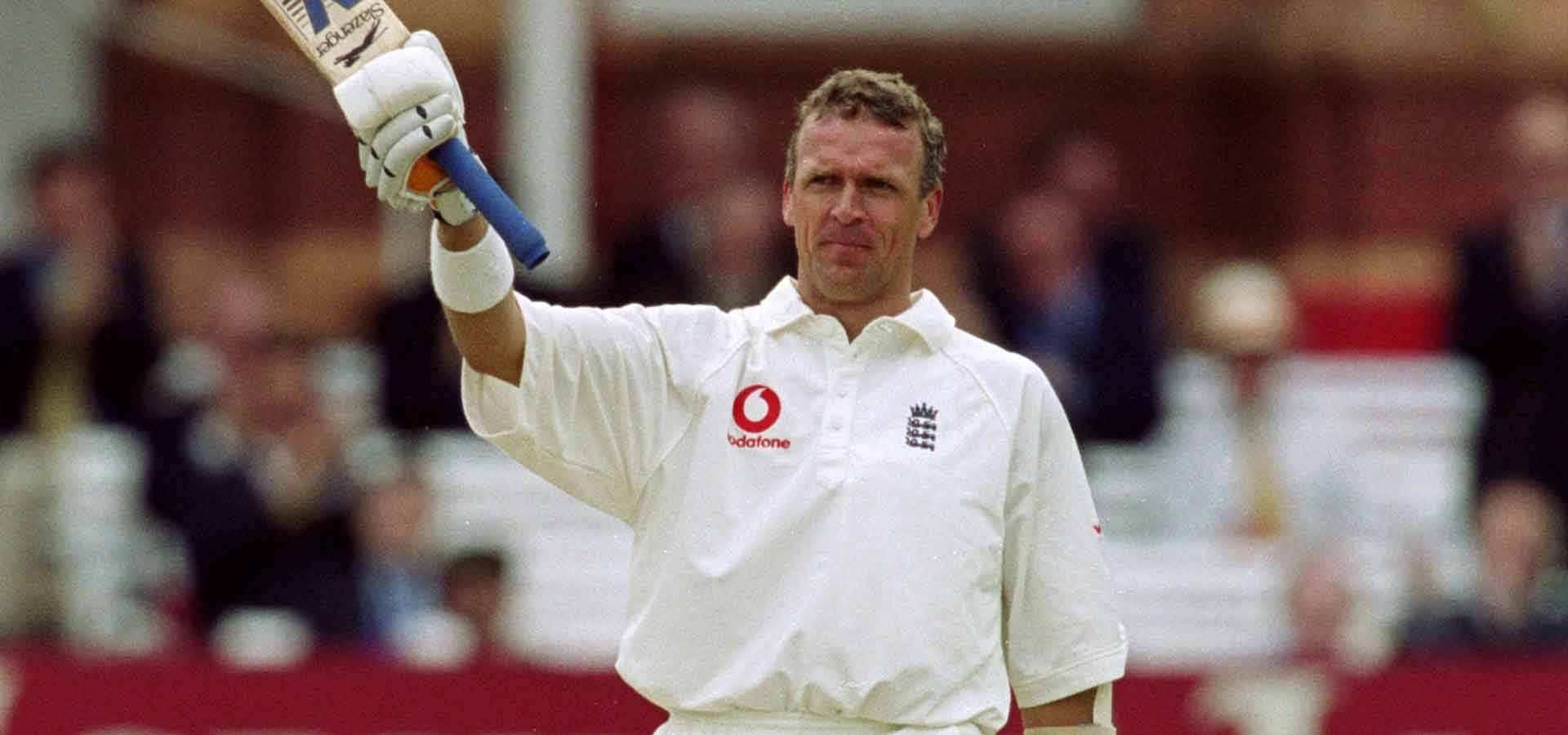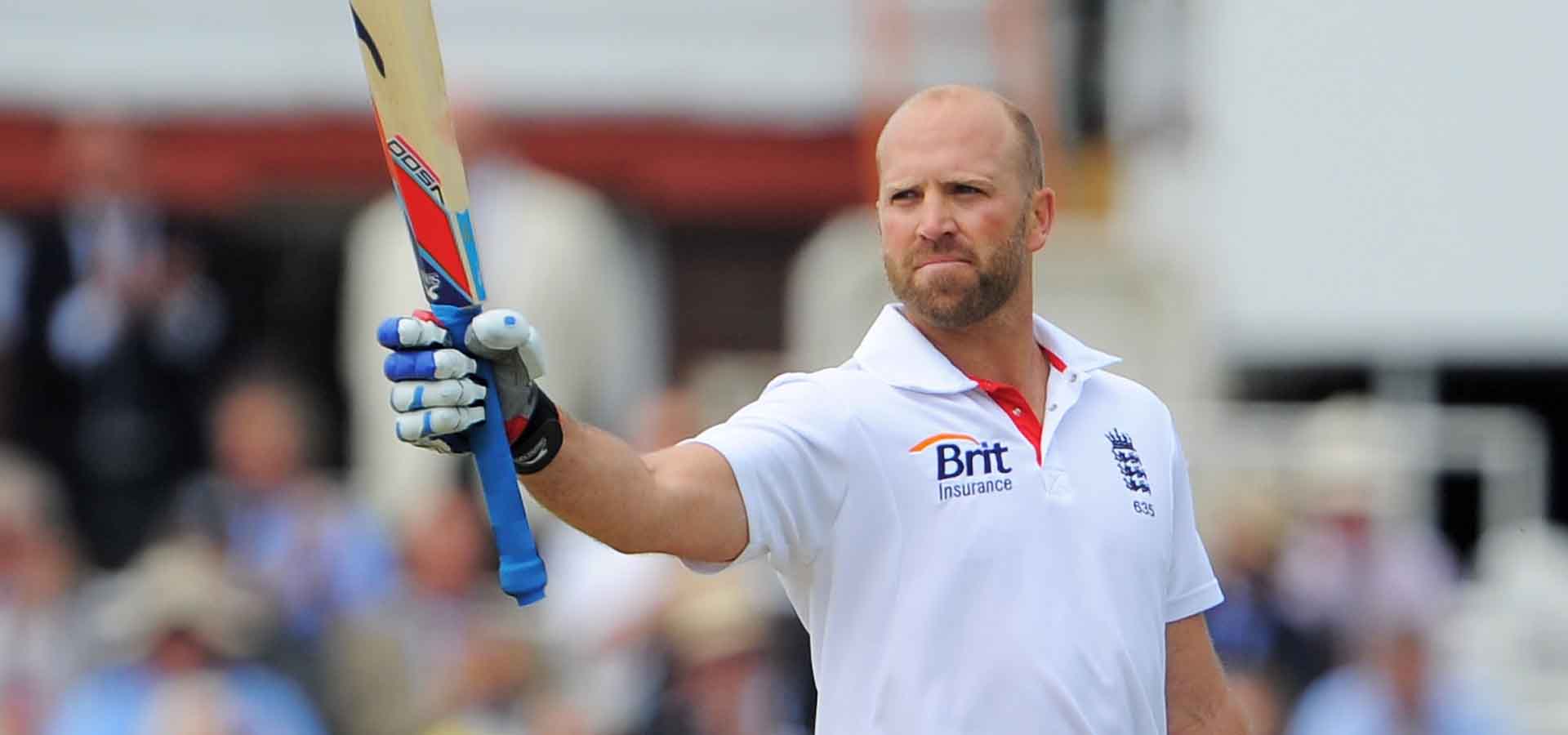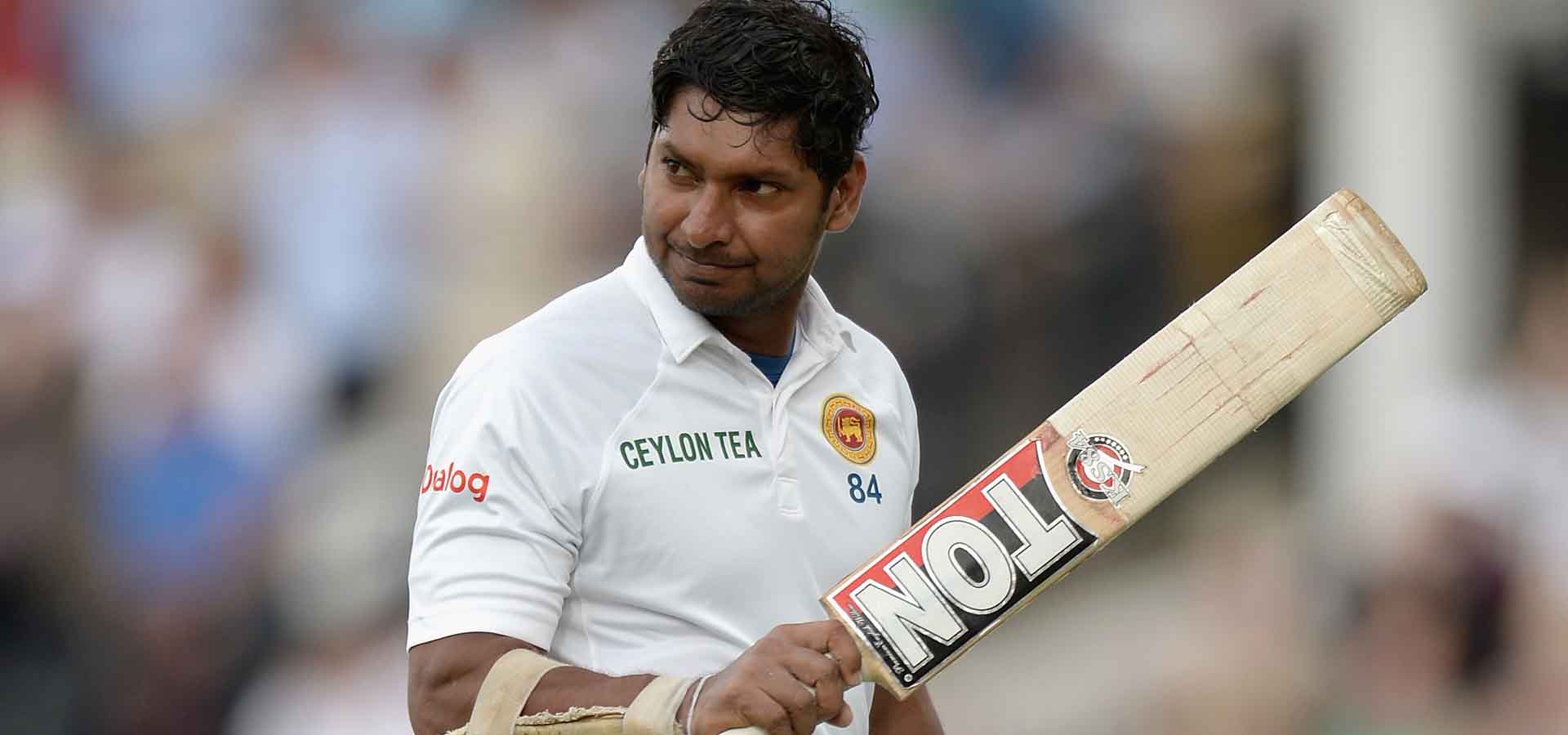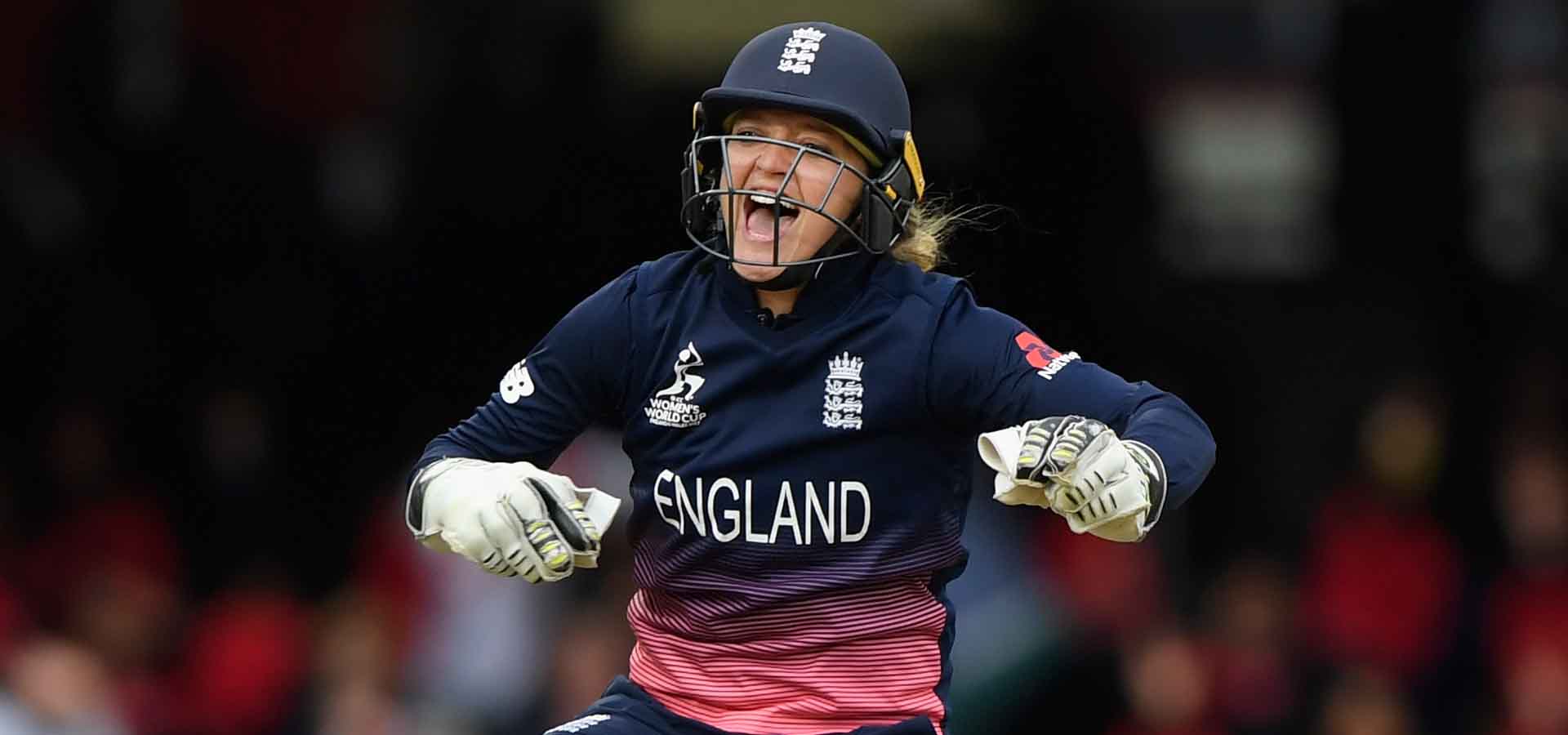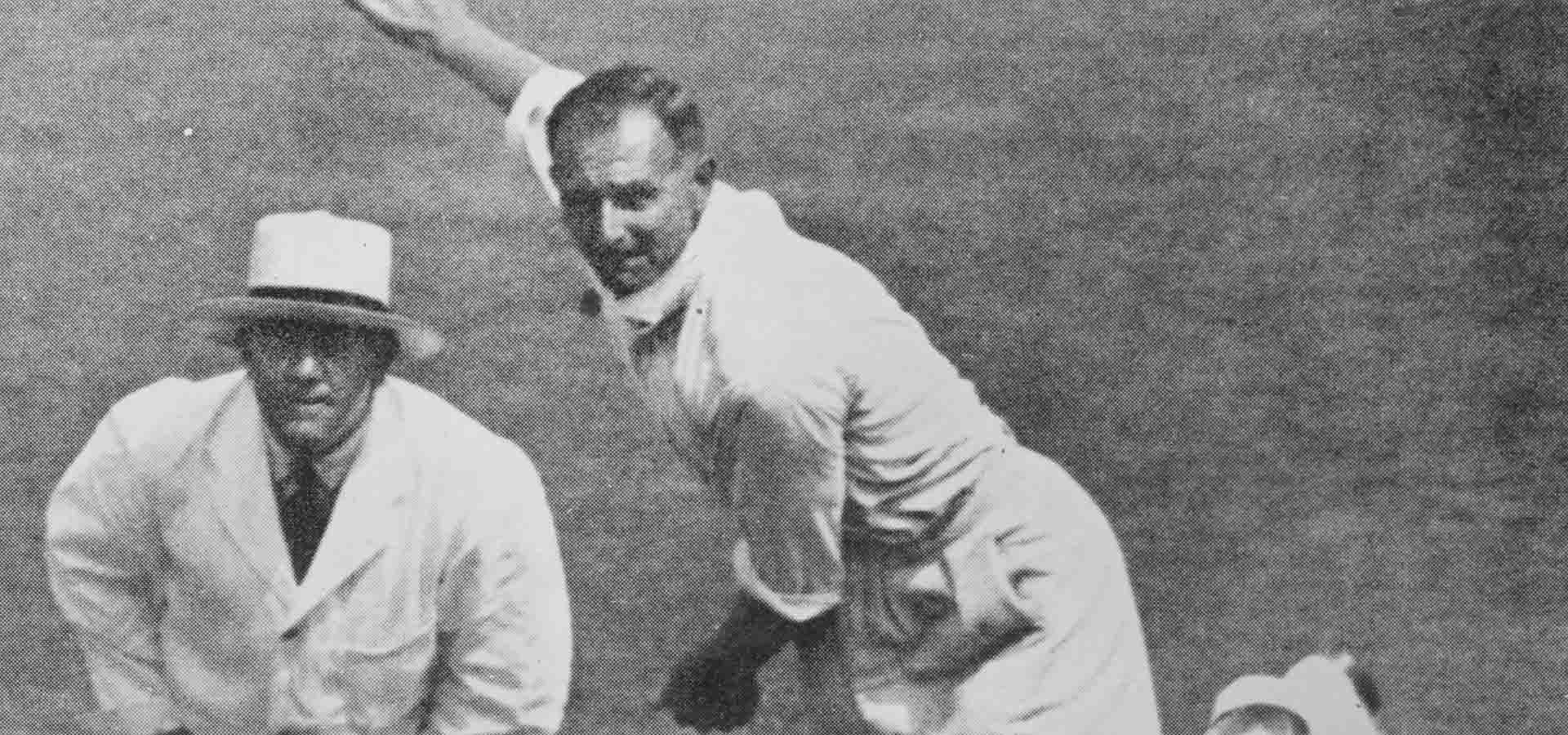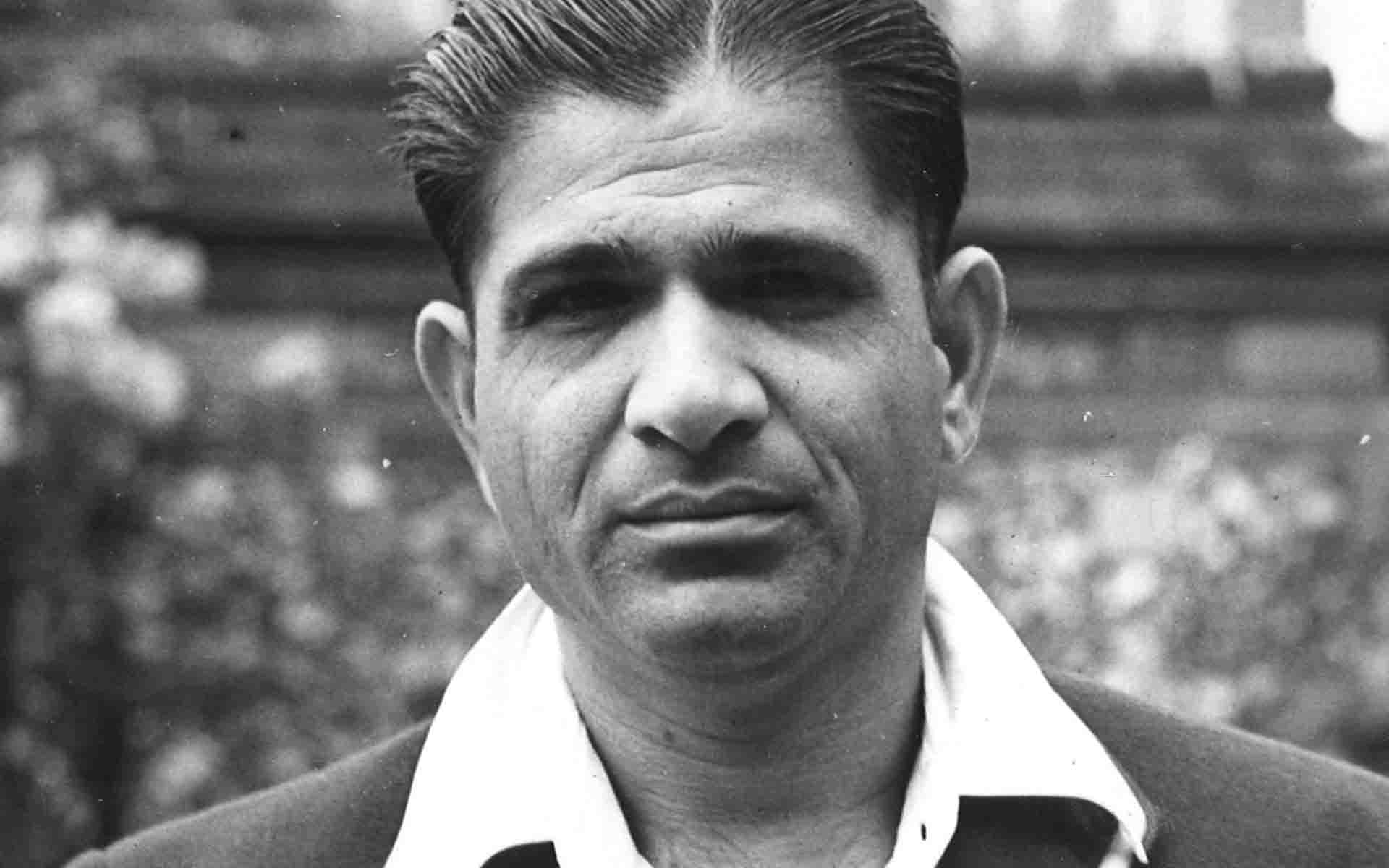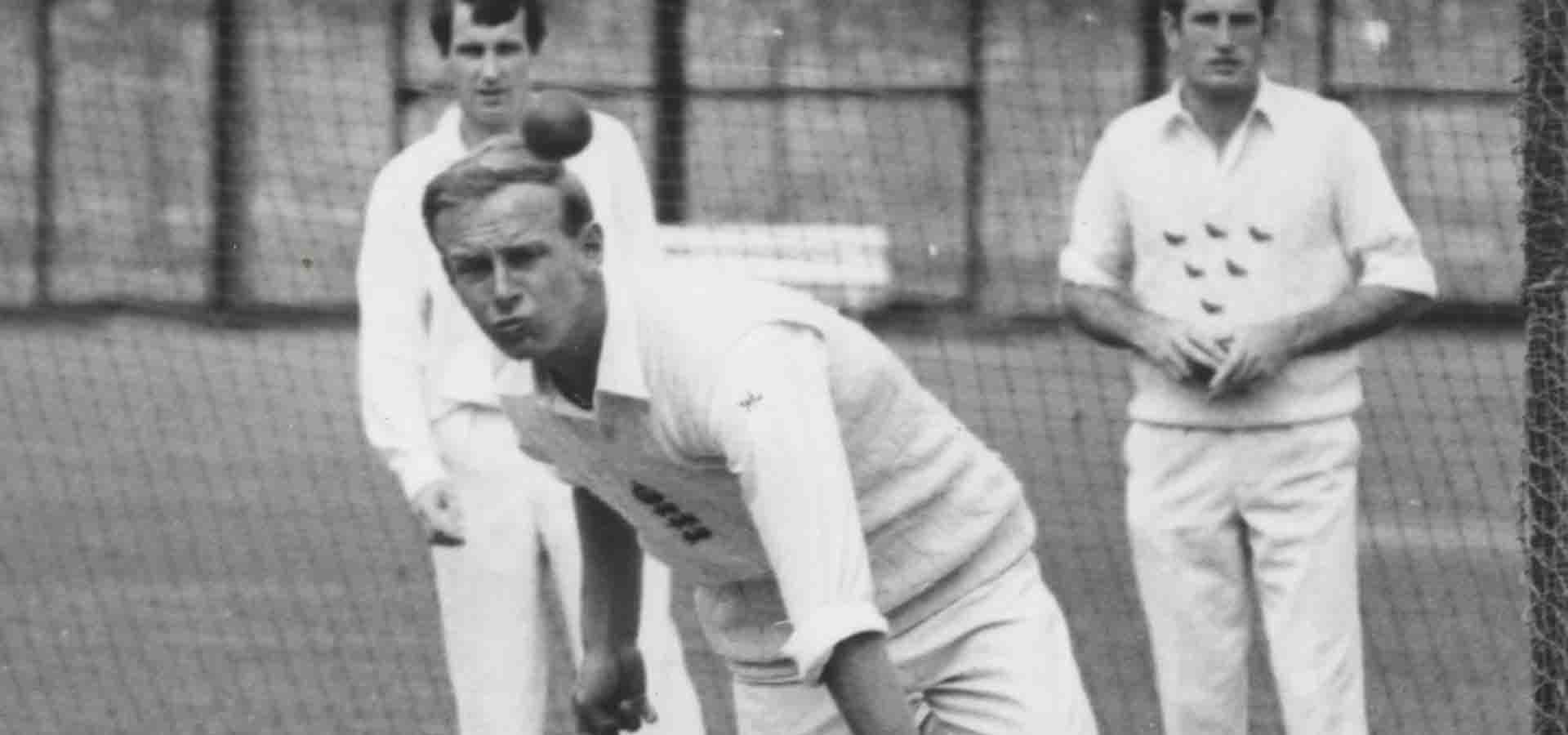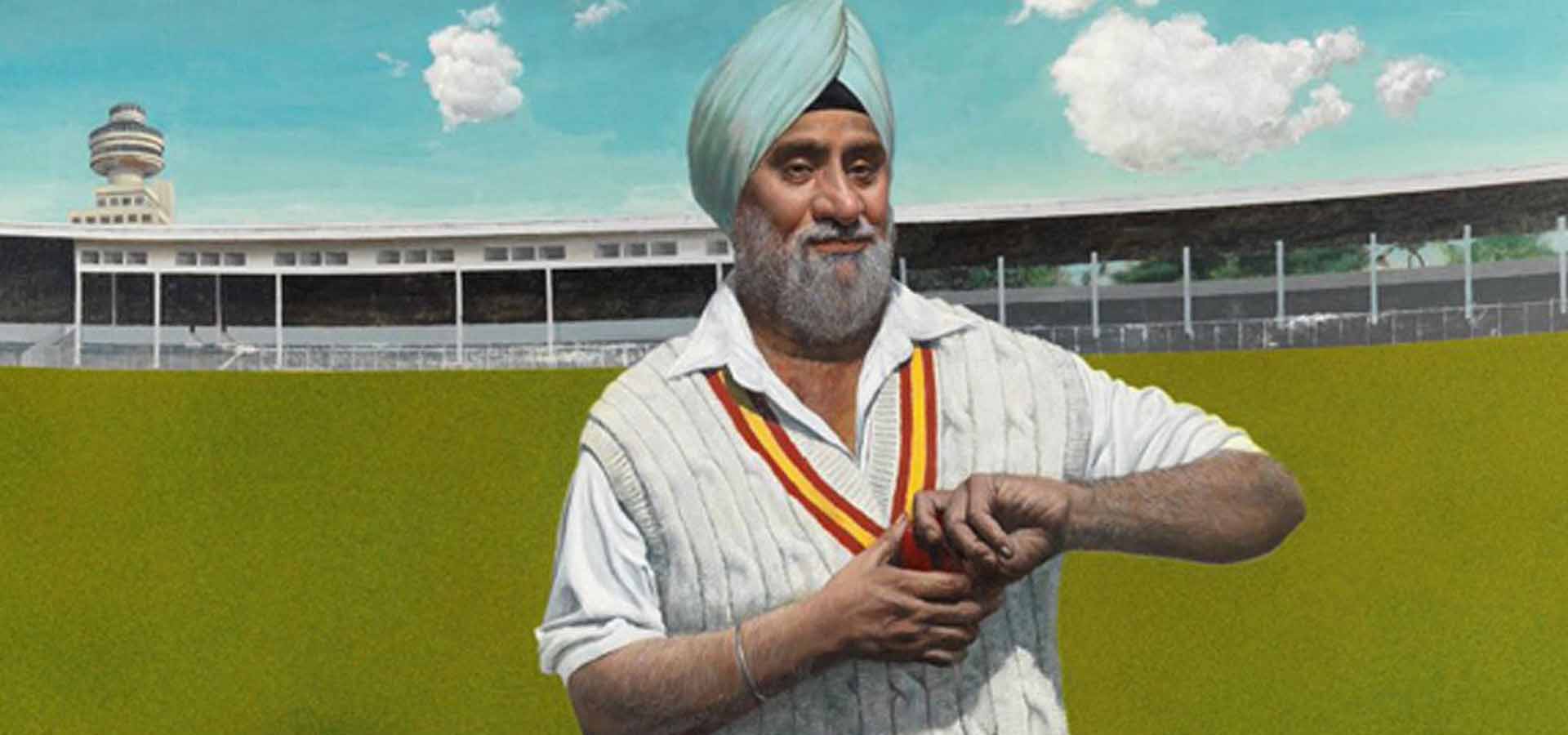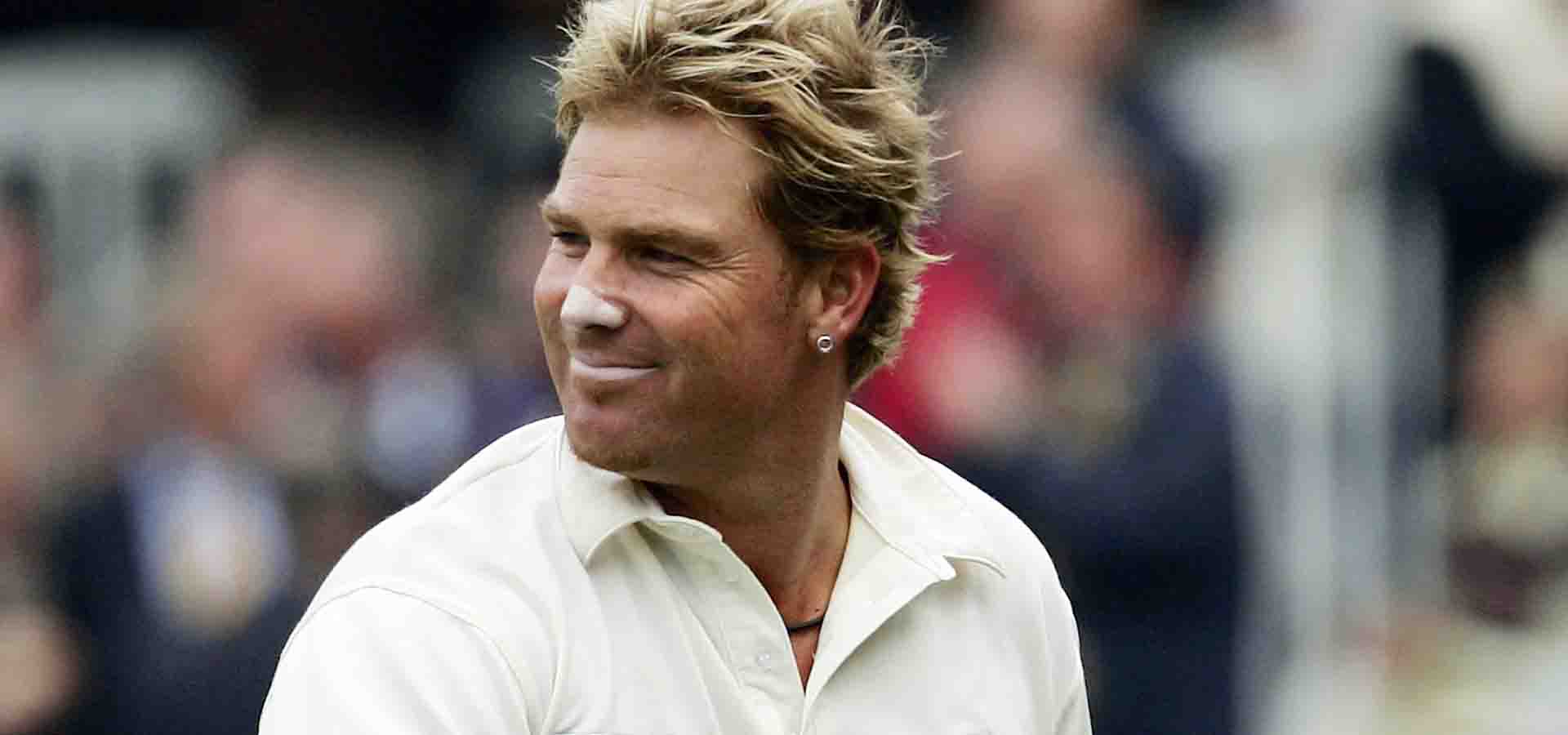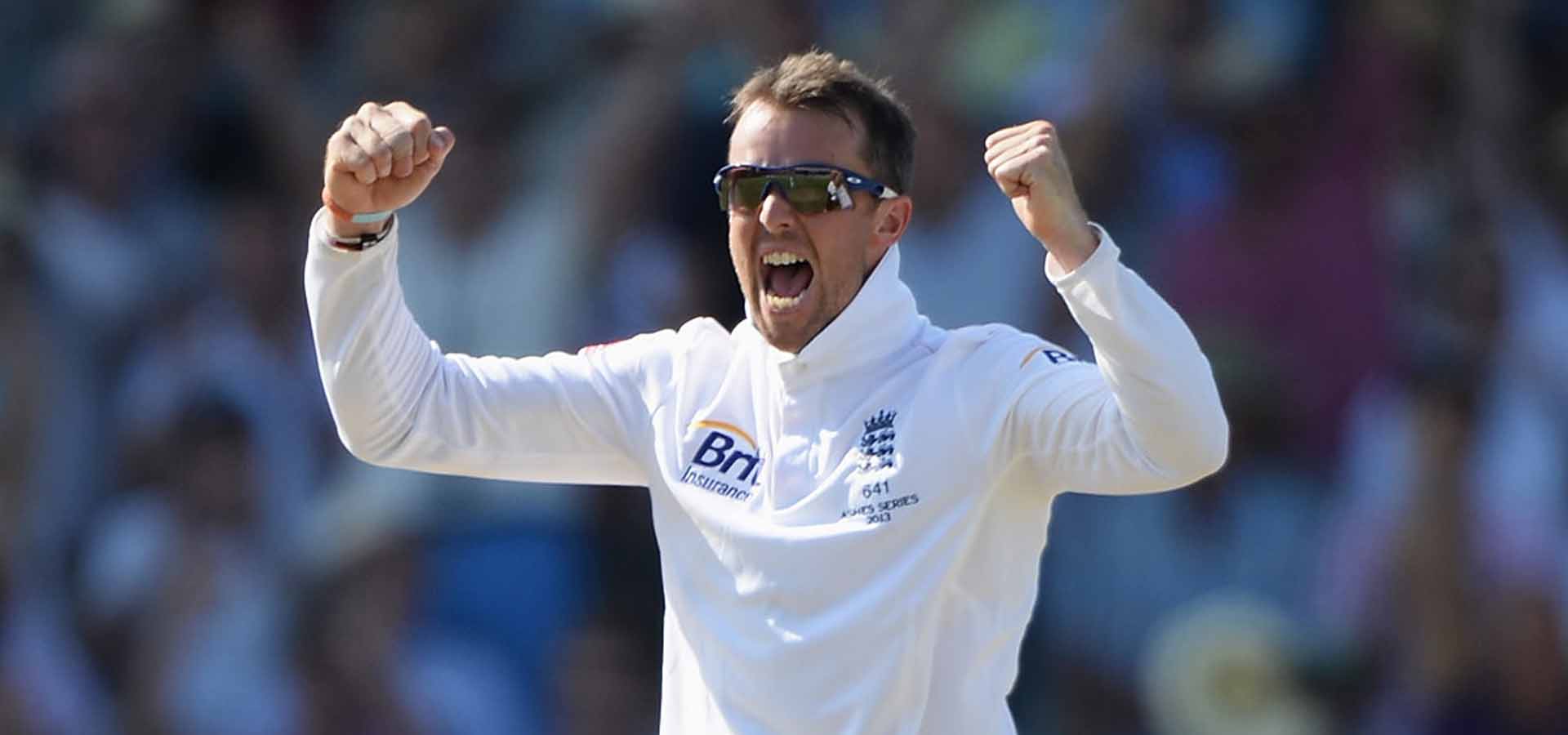Keith Miller
The “Golden Nugget” as he was known could easily claim a place in the all-rounder bracket; 170 wickets at 22.97 in 55 Tests for Australia combined with 2,958 runs at 36.97 give a clear indication of Miller’s capacity with bat and ball.
He formed a lethal new-ball combination with Ray Lindwall which terrorized England’s batsmen in the years following the Second World War, a war in which he had served courageously as a Mosquito pilot. He brought a slice of RAF verve and glamour into the dreary post-war years and played cricket as he lived, with flair, athleticism and elegance. He had played a little Sheffield Shield cricket before the war, but really arrived on the world stage during the Victory “Tests” between England and Australian Services teams in the summer of 1945. Three of the five matches took place at Lord’s: he scored a century in the opening game, took six wickets in the second and scored another century in the third. He ended the summer by smashing 185 in under three hours for the Dominions against England, also at the Home of Cricket.
The post-war years brought him three Tests at Lord’s: in 1948 he scored 74 in a comfortable Australian victory, in 1953 he scored 109 then in 1956 his bowling came to the fore and he took 5-72 and 5-80 in true fast bowler style – nine of his wickets either clean bowled or caught behind. 11 wickets and 20.94 and 270 runs at 45.00; few visiting cricketers have been as quite so at home at the Home of Cricket as Keith Miller.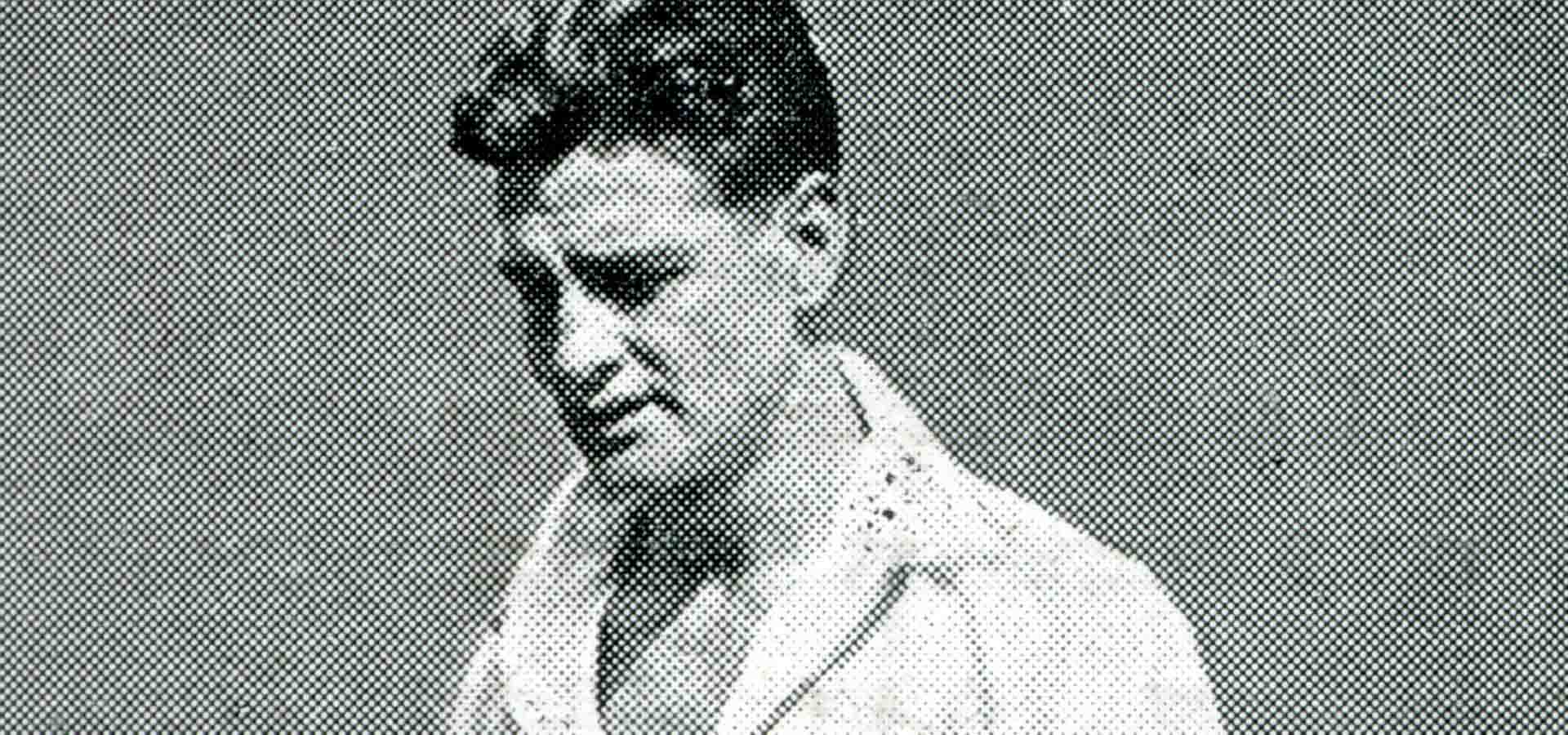
Fred Trueman
The perfect fast-bowler’s combination of aggression and skill characterised Fred Trueman. Genuinely fast in his youth, as his career progressed he learned to rely on movement off the pitch and in the air, becoming the first bowler to take 300 Test wickets in 1964.
“Fiery Fred” played 12 of his 67 Test Matches at Lord’s taking 63 wickets at 22.12. He claimed five wickets in an innings five times, including one 10-wicket match haul. That performance came in 1963 during a thrilling drawn game against West Indies: Trueman took 6-100 and 5-52 as the game ended with England just six runs short of victory with the last pair at the crease. His other outstanding performances came against Australia in 1956 (5-90) and 1964 (5-48) and against Pakistan in 1962 (6-31). His five wickets against Australia in 1964 made him the first bowler to claim a “five-for” on three consecutive Test appearances at Lord’s.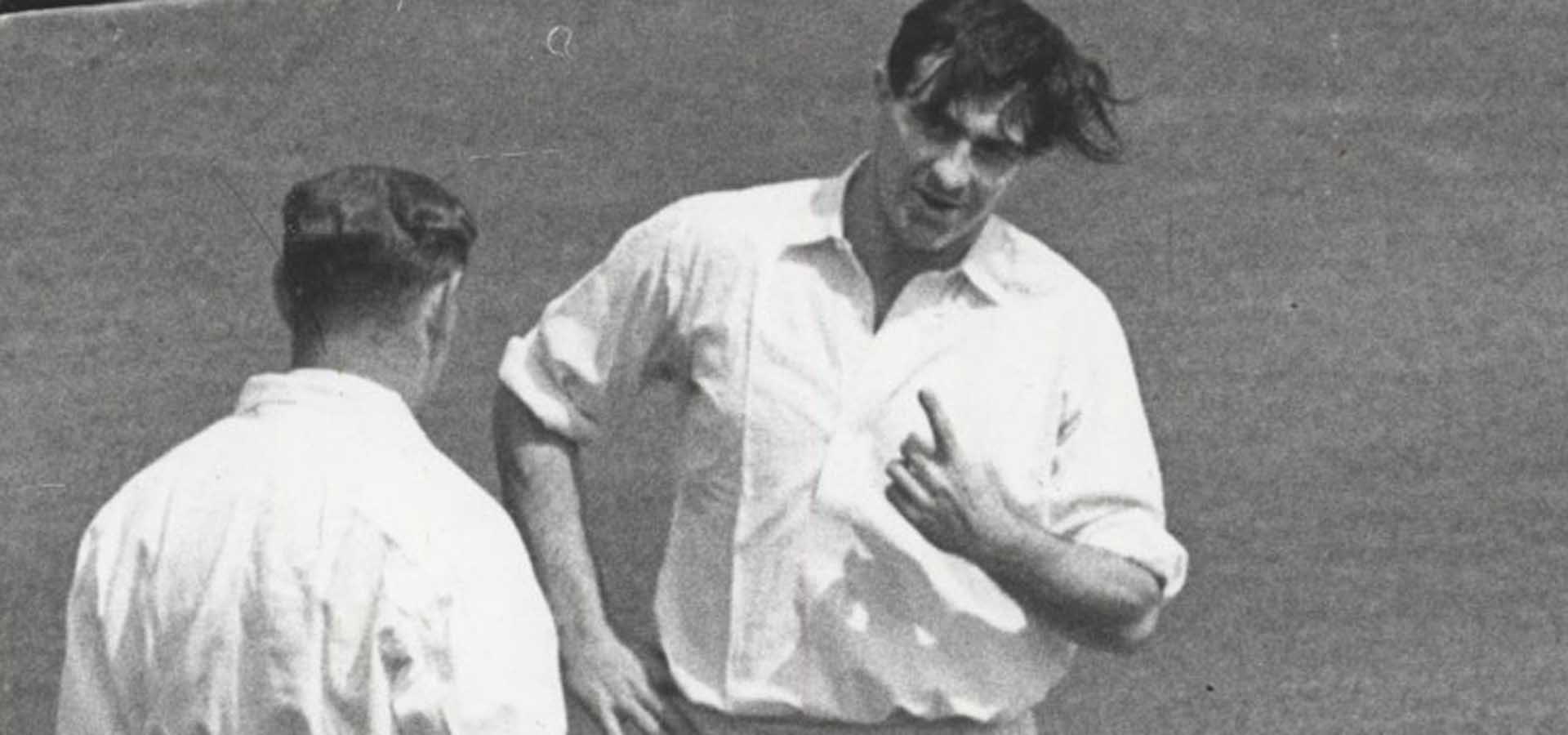
Bob Massie
Perhaps cricket’s greatest “one-hit wonder”, Perth-born Bob Massie hadn’t yet played a Test Match for Australia when he was picked for the 1972 tour of England. He made his Test debut at Lord’s on what Richie Benaud described as “a beautiful batting track”, but Massie took advantage of cloudy conditions to swing and seam the ball both ways at a little above medium pace and take 8-84 in the first innings and 8-53 in the second. He became the first – and so far only - Australian to take 15 wickets in a Test Match and his match figures of 16-137 were a record for a Test debutant until India’s Narendra Hirwani bettered them by one run in 1988. They remain a record for a Test at Lord’s.
Massie played only five more Tests and never took another five-wicket haul. On tour in the West Indies the following spring he struggled with illness and tried to modify his action. His career fell away completely and by 1974 he had lost his place in the Western Australia side. Nevertheless, for “Massie’s Match” he will always be a legend at Lord’s.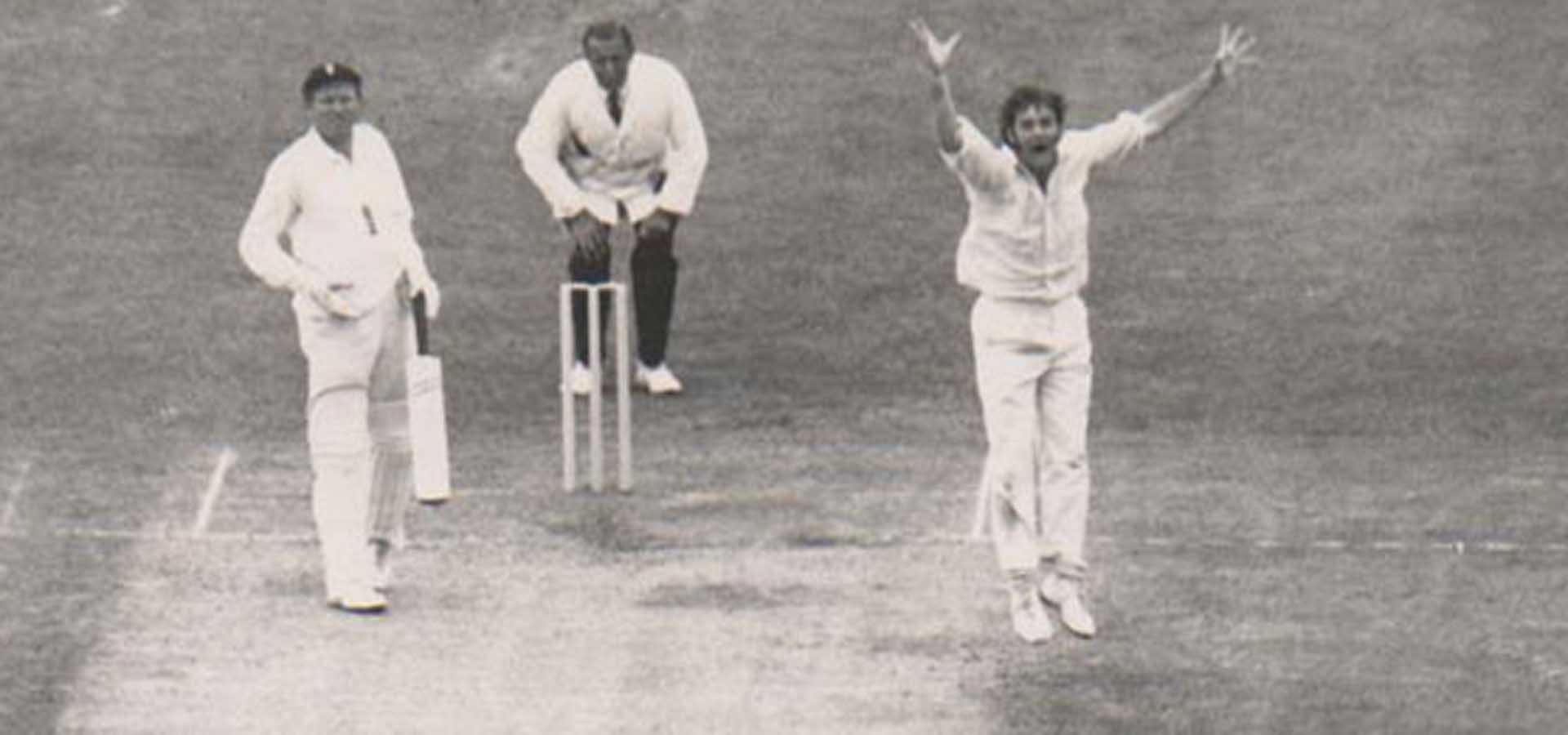
Sir Richard Hadlee
Perhaps New Zealand’s greatest ever cricketer, Sir Richard Hadlee was one of the great all-rounders in an age of great all-rounders and arguably the greatest bowler of them all, renowned for nagging accuracy on the off-stump at a sometimes genuinely fast pace. No-one who saw it could forget his smooth, rhythmical approach to the wicket or his classically side-on action.
He never failed to produce something in a Test Match at Lord’s: in 1978 he took 5-84, in 1983 5-93, in 1986 he produced his Lord’s best of 6-80, becoming the first overseas bowler to claim a “five-for” on three consecutive Test appearances at Lord’s and then in 1990, in his penultimate Test appearance, he took four wickets in the match and hit 86 from 84 balls.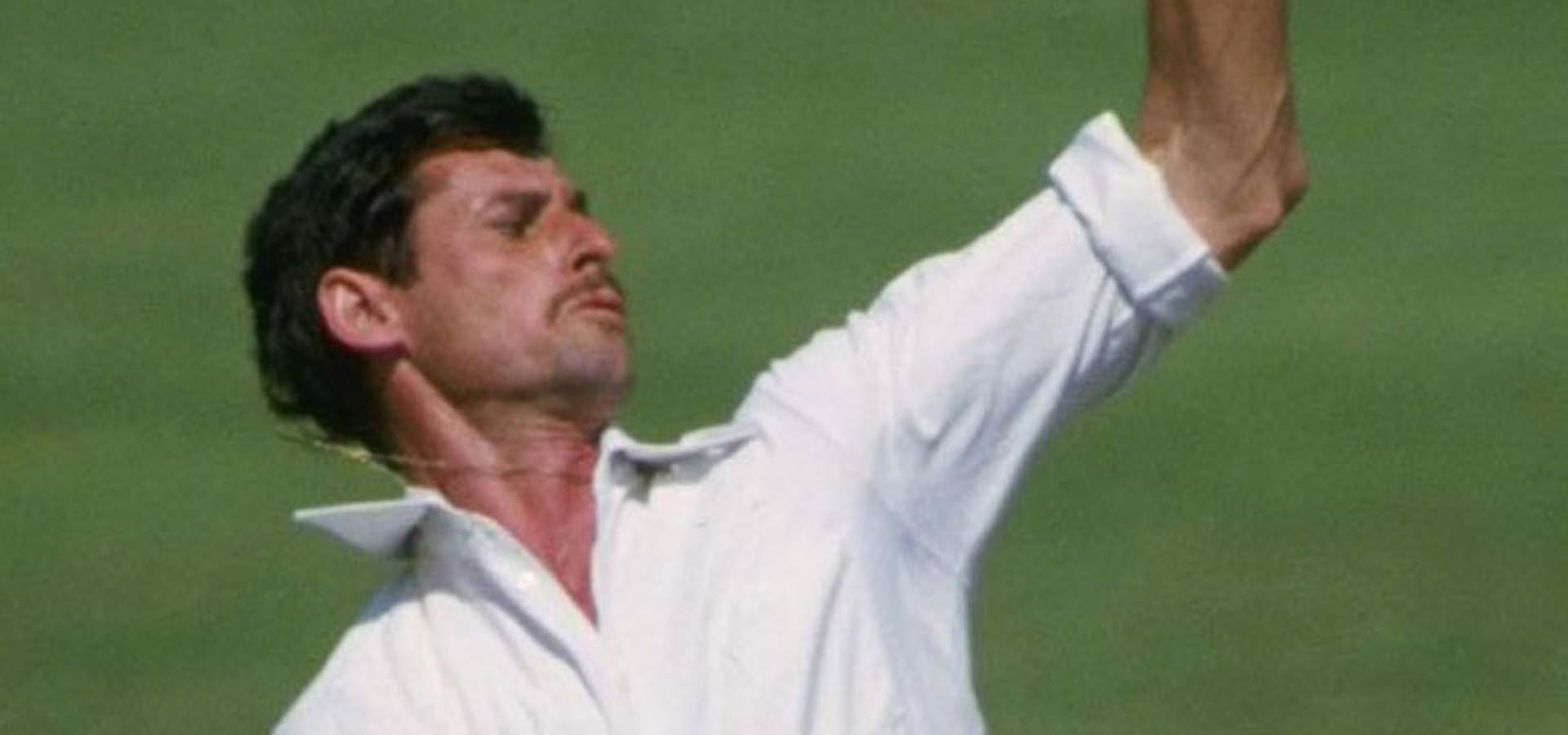
Glenn McGrath
Glenn McGrath followed Sir Richard Hadlee in becoming the second visiting bowler to take a “five-for” on three consecutive Test appearances at Lord’s. When you consider that he only played three Test Matches at the Home of Cricket, the achievement becomes even more impressive.
He got off to a flyer in 1997, ripping out England’s first three batsmen to leave them tottering at 13-3 and destroying the momentum the hosts had built up with a shock victory at Edgbaston. England were bowled out for just 77, McGrath claiming 8-38. In 2001 he claimed 5-54 in the first innings and 3-60 in the second and then in 2005 it was 1997 all over again only this time it was the top four he tore through as England struggled to 19-4. They recovered to make 155 with McGrath taking 5-53. 4-29 followed in the second innings to seal England’s fate.
26 Test wickets at Lord’s (more than any other visiting bowler) at an average of 11.50, 8 ODI wickets at 22.62, World Cup triumph in 1999, McGrath destroyed English hopes every time he played at Lord’s. It would be nice to have him in the home dressing room for a change.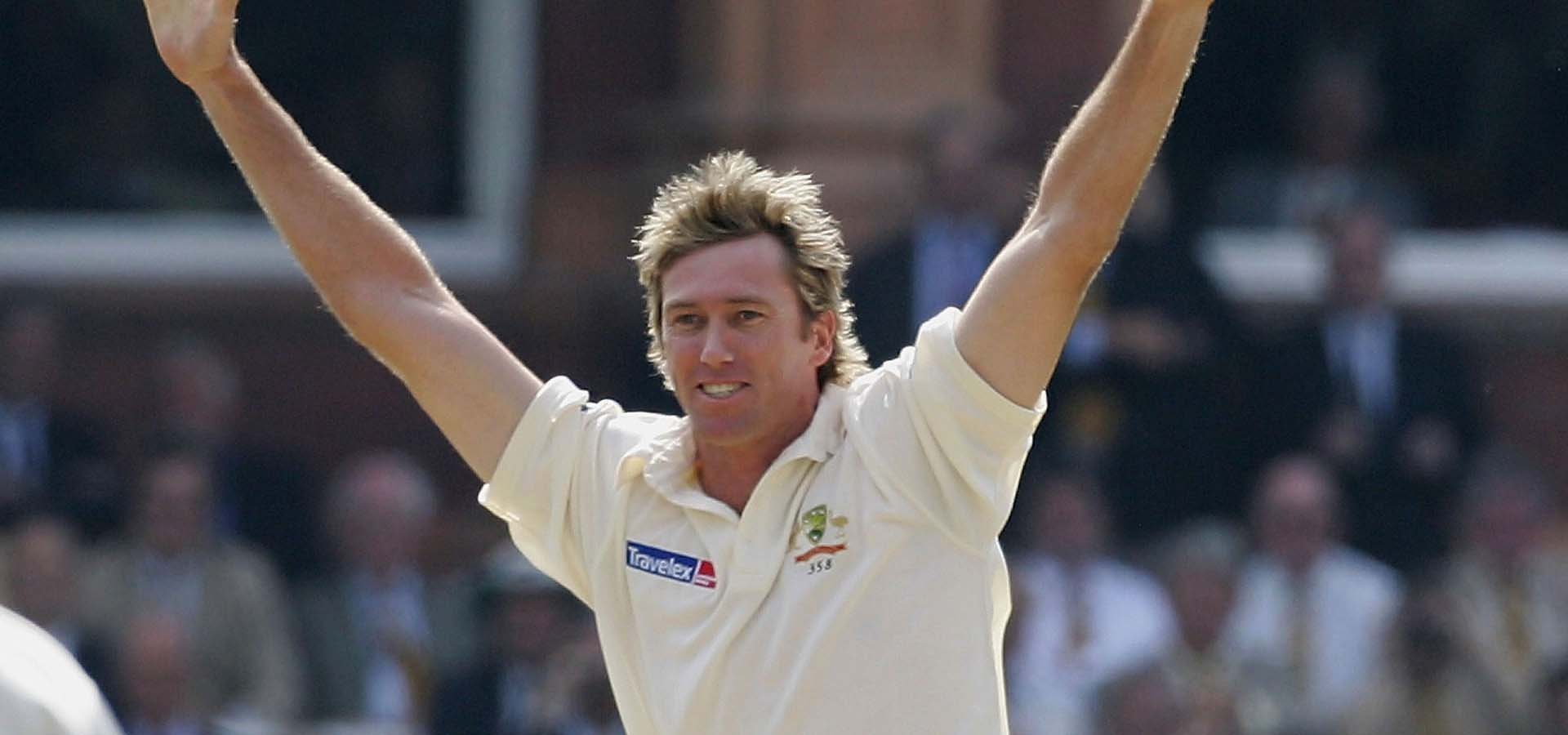
James Anderson
In 23 Test Matches at Lord’s James Anderson has bowled 5,439 balls and taken 103 wickets at 23.89, making him the leading Test wicket-taker at the Home of Cricket. He is only the second bowler in history, after Muttiah Muralitharan, to take a hundred wickets at a single venue.
One of those cricketers who just seems to get better and better, some of his most recent Tests at Lord’s have brought his finest performances at the Ground: bags of 5-20 and 4-23 against India in 2018 and a match-winning spell of 7-42 (four clean-bowled, three caught behind) against West Indies in 2017. He made his Test debut against Zimbabwe at Lord’s in 2003 and took 5-73. More five-wicket hauls followed: two against India 5-42 in 2007 and 5-65 in 2011, and 5-47 against New Zealand (2013). Few fast bowlers in recent years have shown Anderson’s level of skill with the moving ball.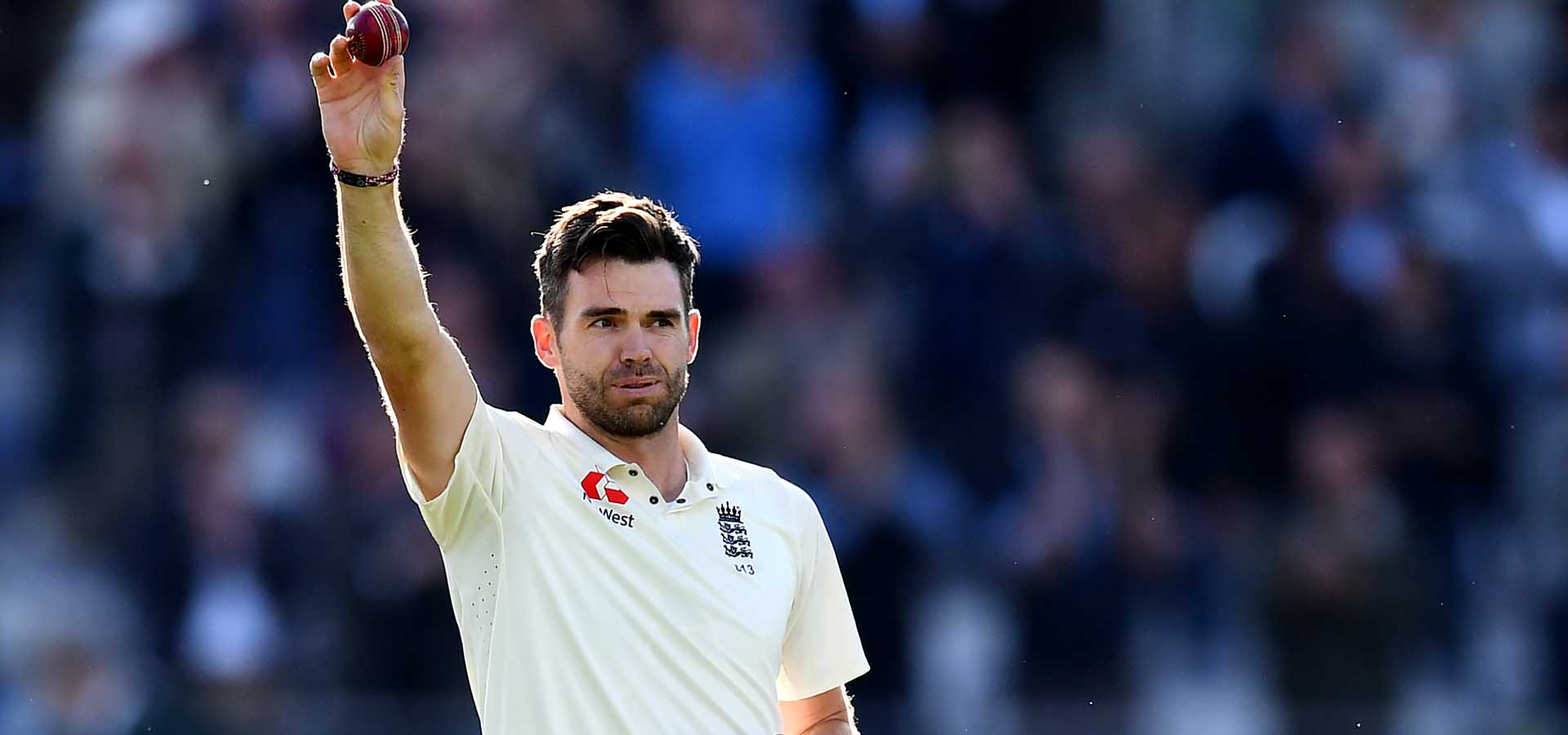
Brett Lee
A genuinely hostile fast bowler guaranteed to be running in as hard for the last over of the day as the first, Brett Lee may only have played two Tests at the Home of Cricket, taking seven wickets at 27.42, but his ODI record on the ground is especially impressive.
In seven outings in the shorter format the Australian speedster racked up 18 wickets at 16.22. He took two five-wicket hauls: 5-41 in 2005 and 5-49 in 2009, four of the latter wickets clean bowled. No other bowler has claimed more than one ”five-for” in ODIs at Lord’s. He played a key role in Australia’s 2005 Test win, catching Andrew Strauss off his own bowling to break England’s second innings opening stand of 80, then 10 overs later removing skipper Michael Vaughan to reduce the hosts to 112-4.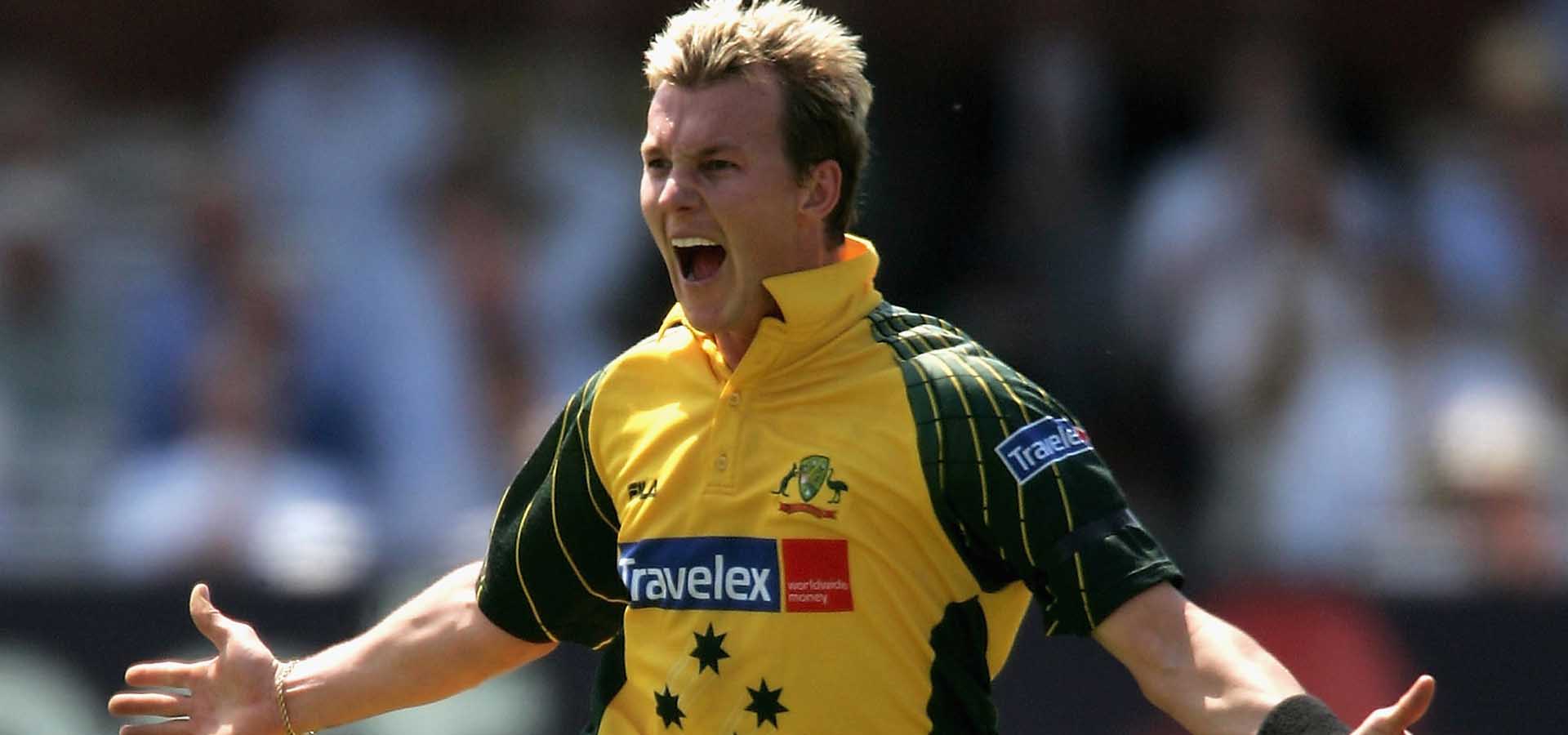
Stuart Broad
Second only to Anderson in the list of Test wicket-takers at Lord’s, Stuart Broad’s 23 Test Matches at the Home of Cricket have brought him 94 wickets at 27.06. His first appearance on the Honours Boards came after his fifth Test on the Ground and unexpectedly resulted from his performance with the bat: an innings of 169 and an eighth wicket partnership of 322 with Jonathan Trott the backbone of a convincing England victory over Pakistan in 2010.
His best performances with the ball came against West Indies in 2012, when he twice ran through the visitors’ middle and lower order to record match figures of 11-165, and against New Zealand in 2013 when in one of his periodic spells of irresistible bowling he demolished the Kiwi top-order before finishing their innings off for just 68. His figures of 7-44 were almost as good as the 7-43 he had claimed in the first innings against West Indies the year before.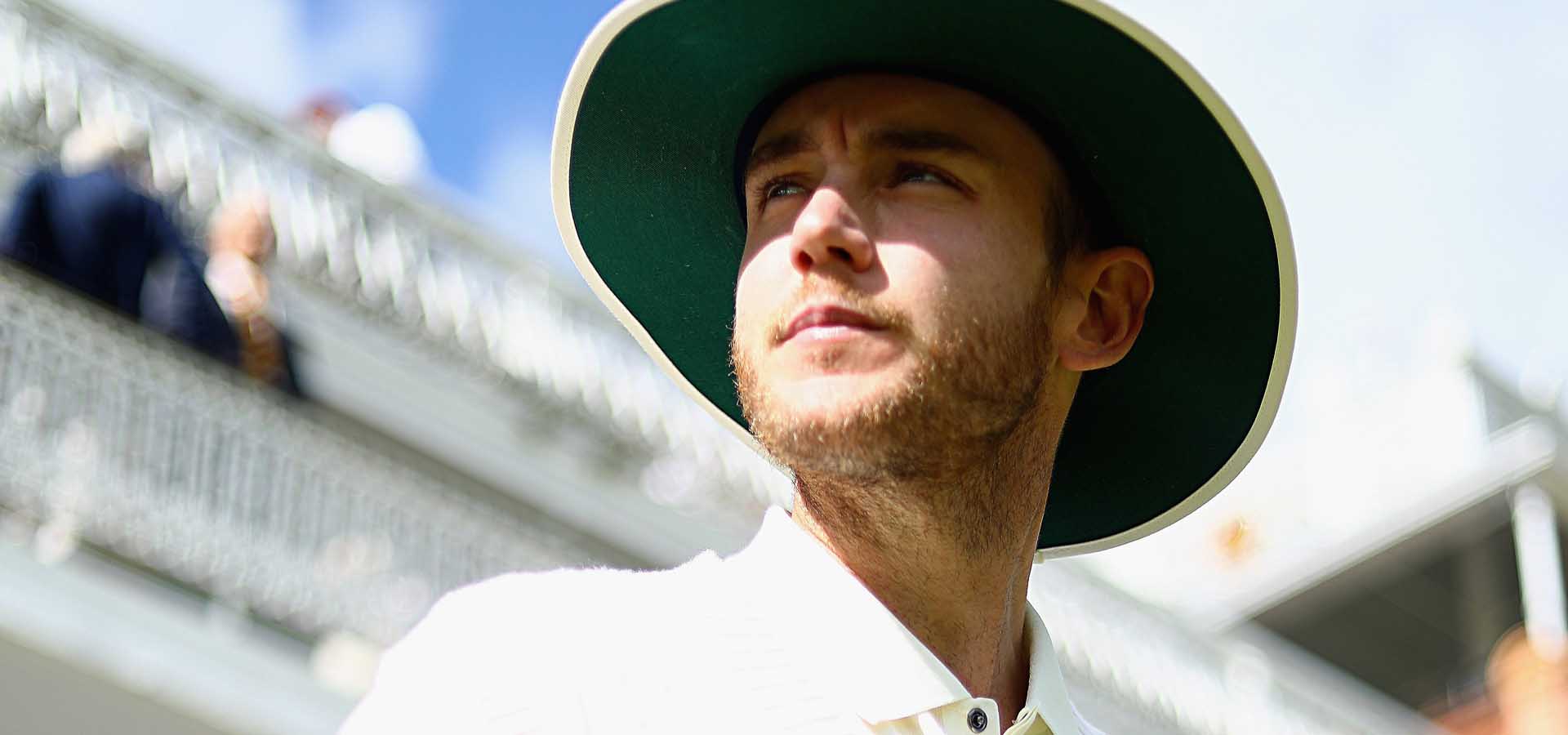
Chris Woakes
No one-Test wonder, but Chris Woakes seems to raise his game at Lord’s in an almost Bob Massie-like way.
His overall Test bowling average is 30.88; at Lord’s it’s 11.33. His Test batting average at Lord’s is 61.20 compared to an overall 26.75. He has taken three five-wicket hauls (including one 10-wicket match haul) at Lord’s but has never managed this on any other Test ground. With the bat, his only Test century has come at Lord’s, 137 not out against India in 2018, together with one of his three fifties. Pakistan were on the wrong end of his bowling expertise in 2016; Woakes claiming match figures of 11-102. Then in 2019 he produced a remarkable return of 6-17 as Ireland were dismissed for just 38 on their first Test appearance at Lord’s.
Already Woakes has bagged 27 wickets in just five Tests at Lord’s and his 3-37 in the 2019 ICC Men’s Cricket World Cup Final has earned him a place in history.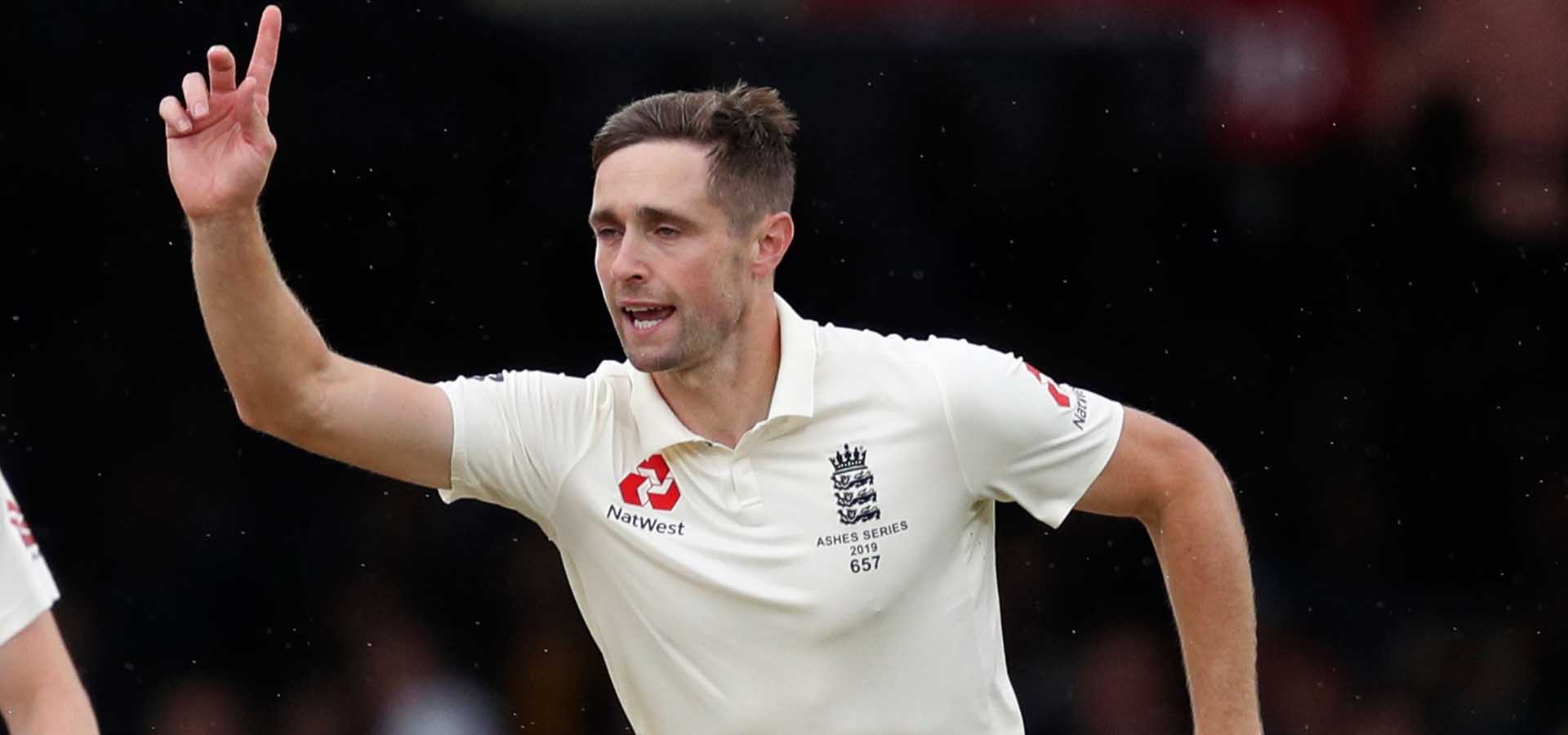
Results
